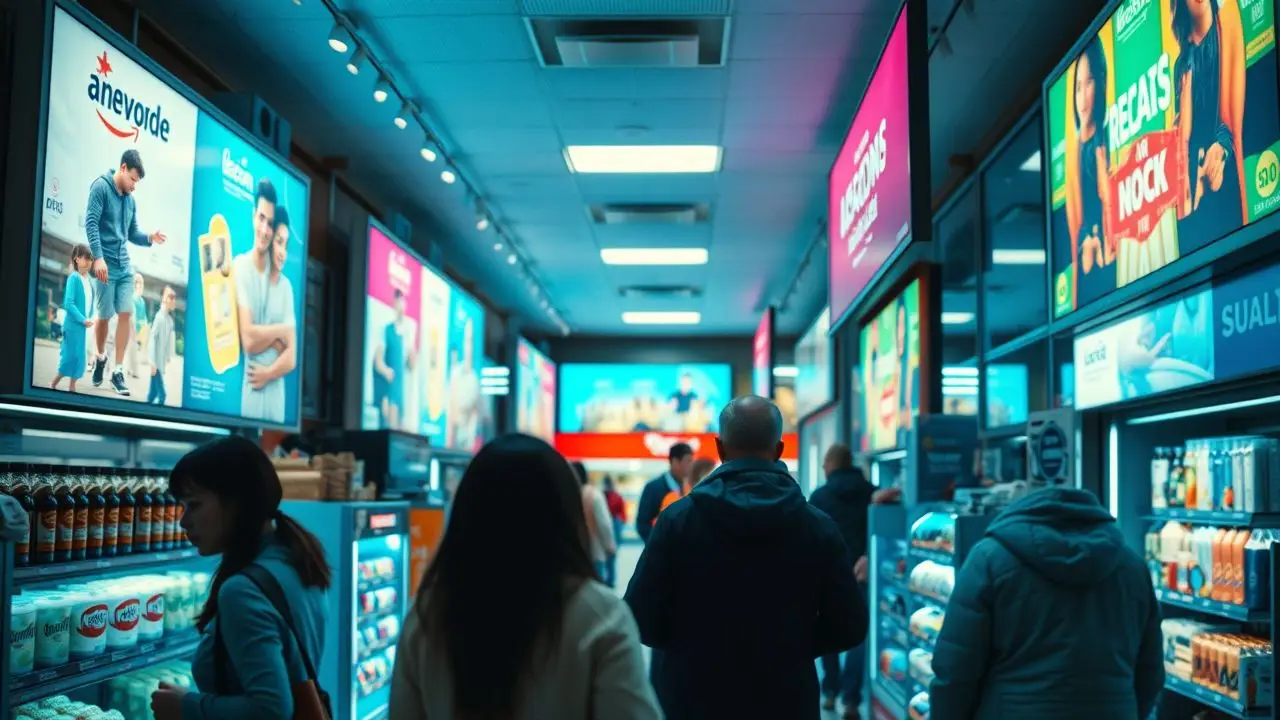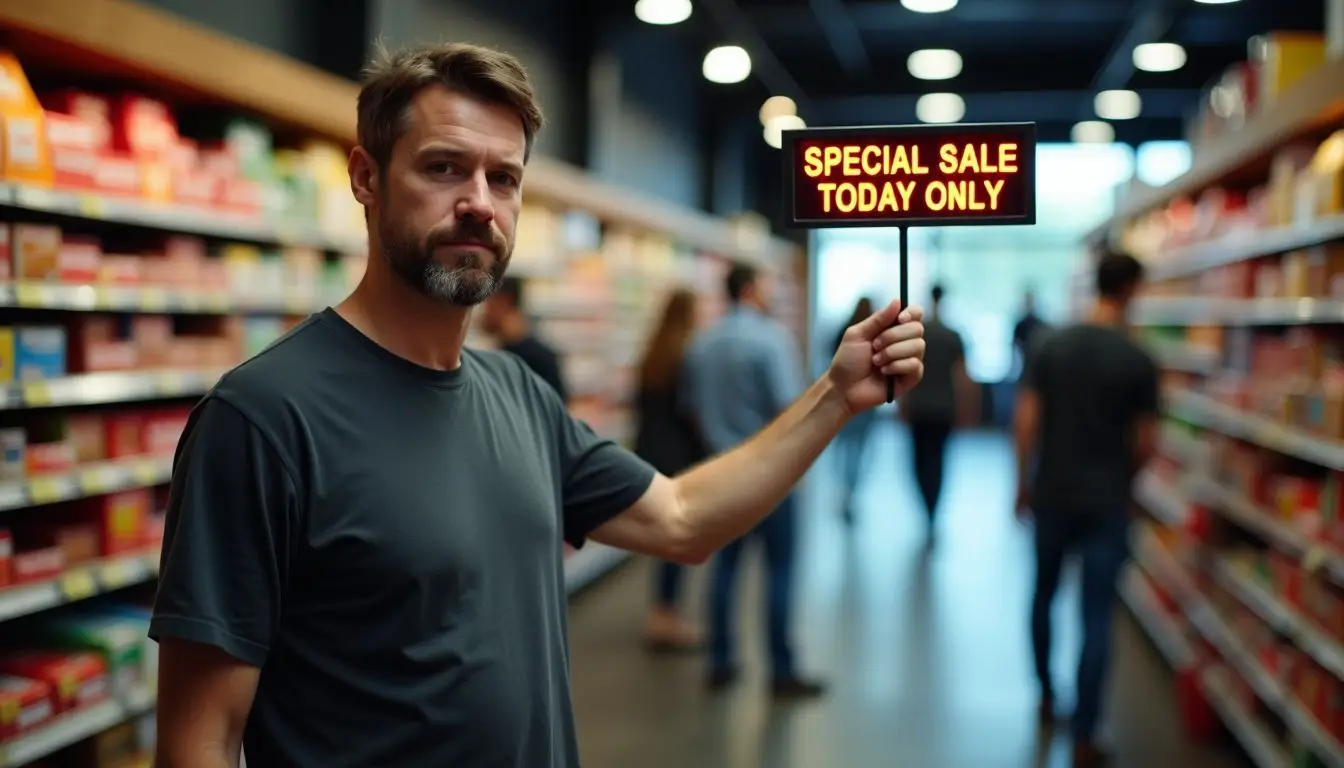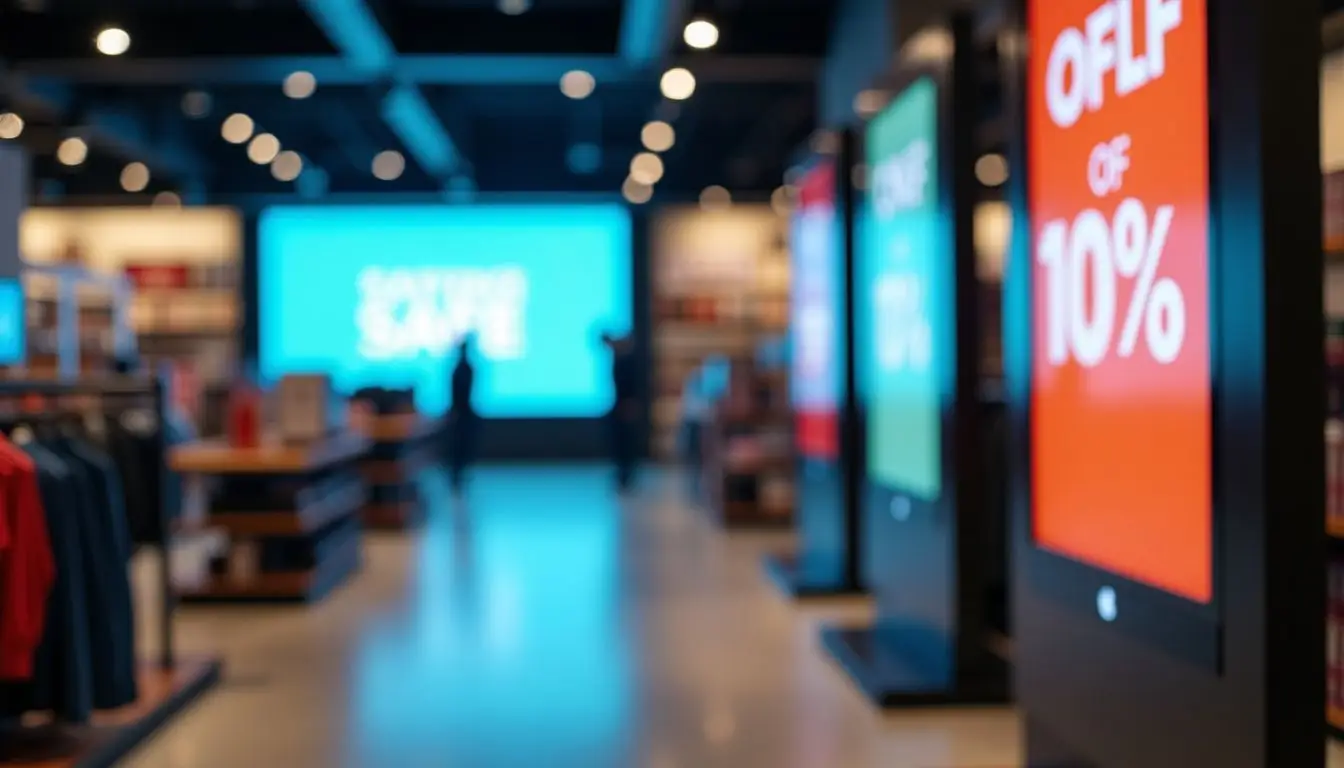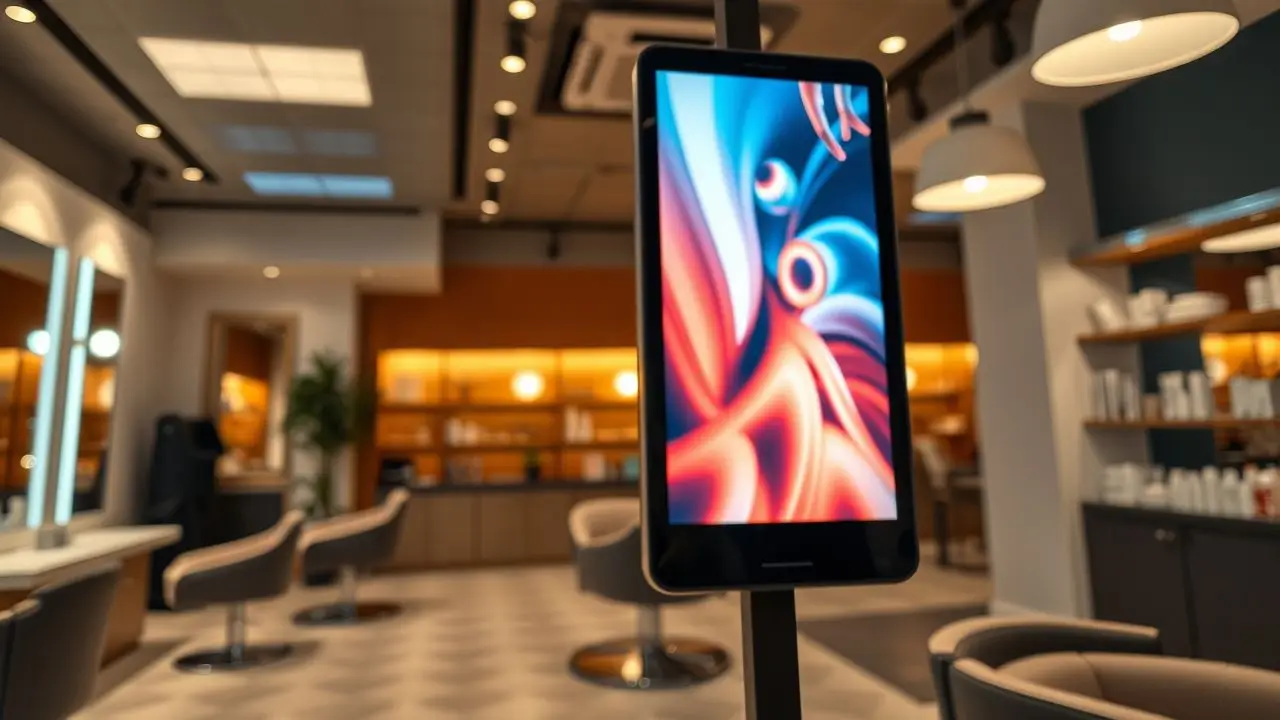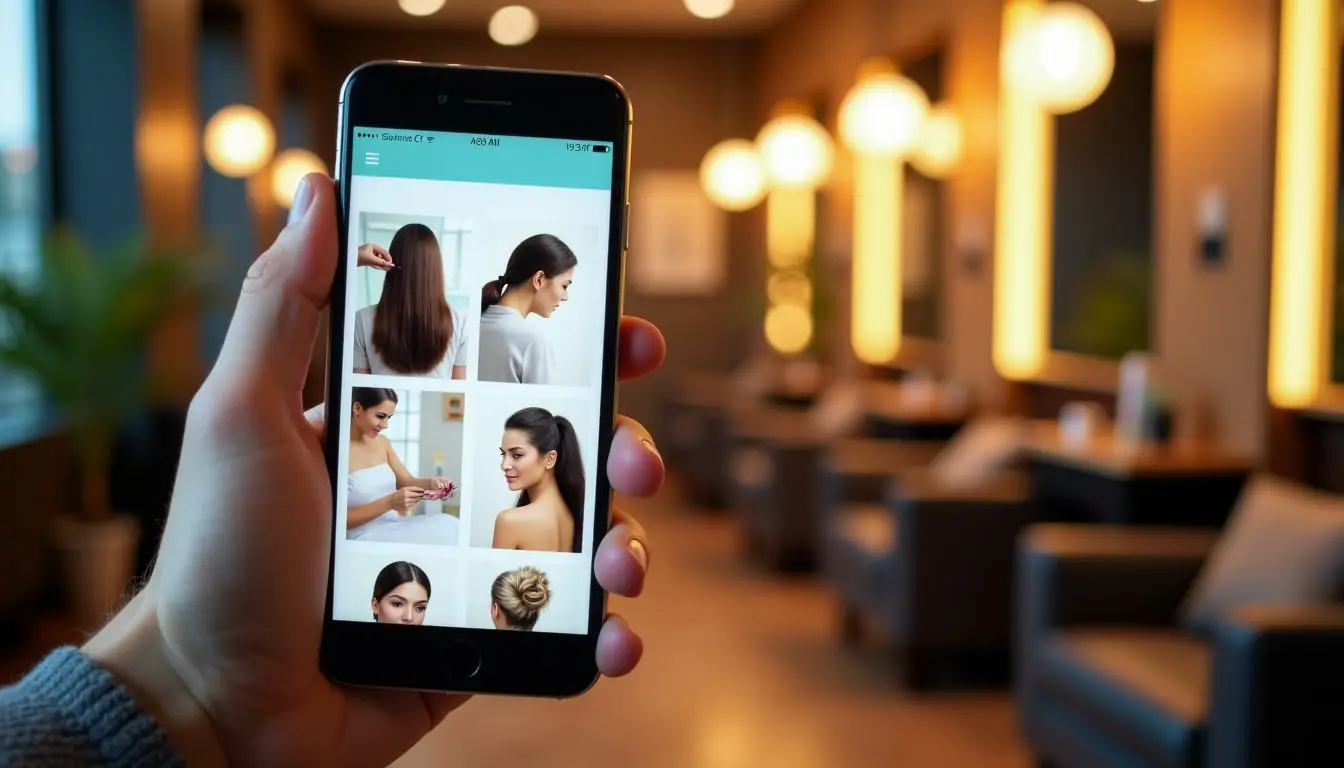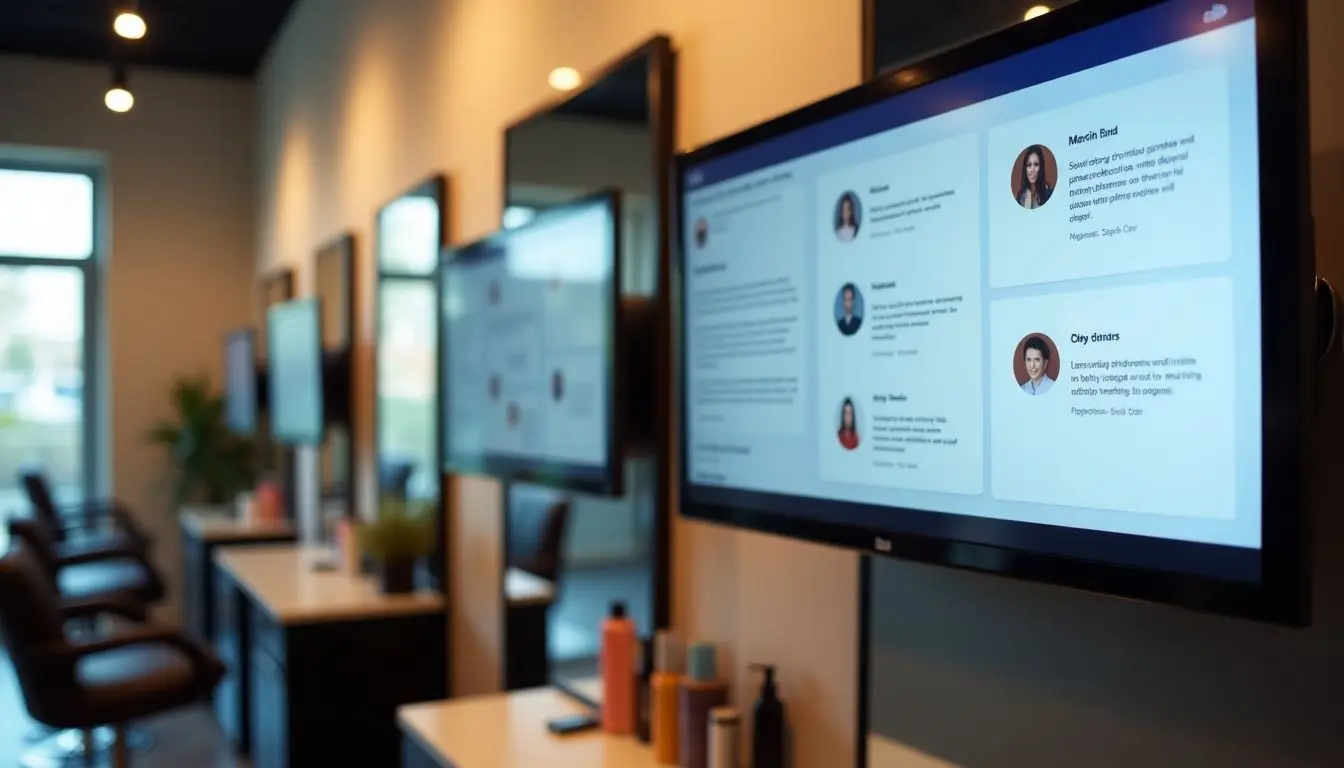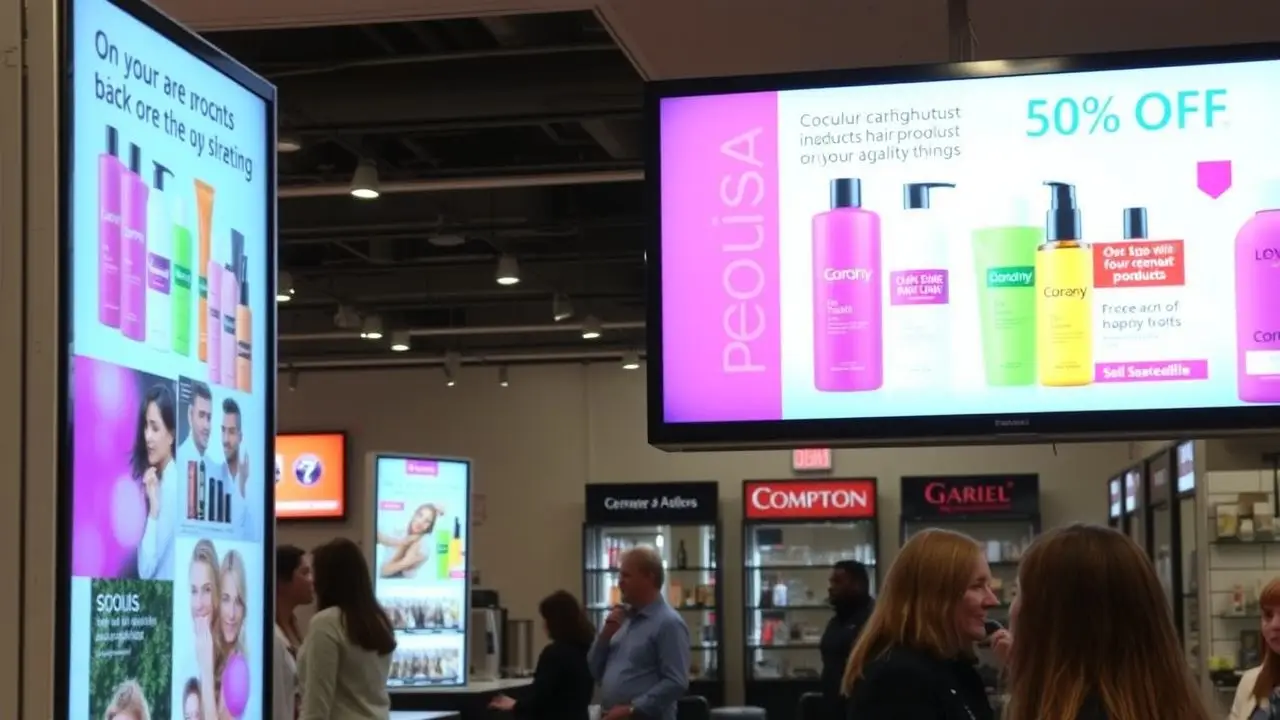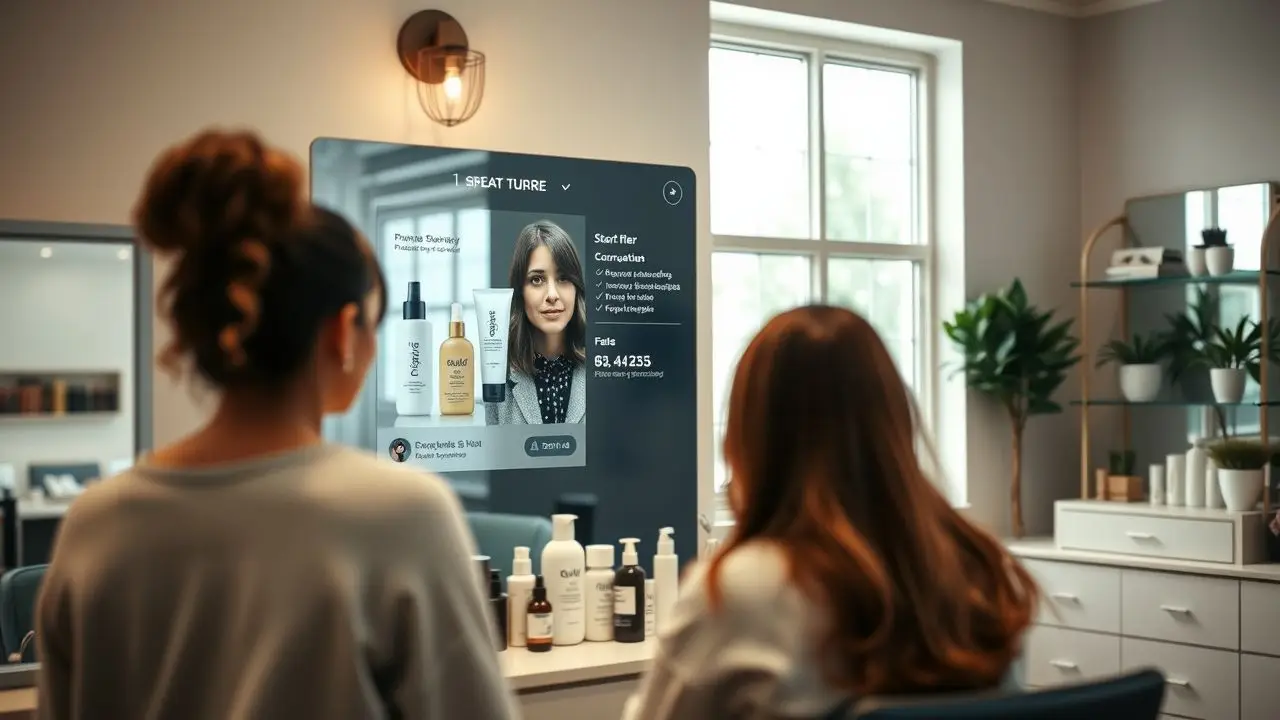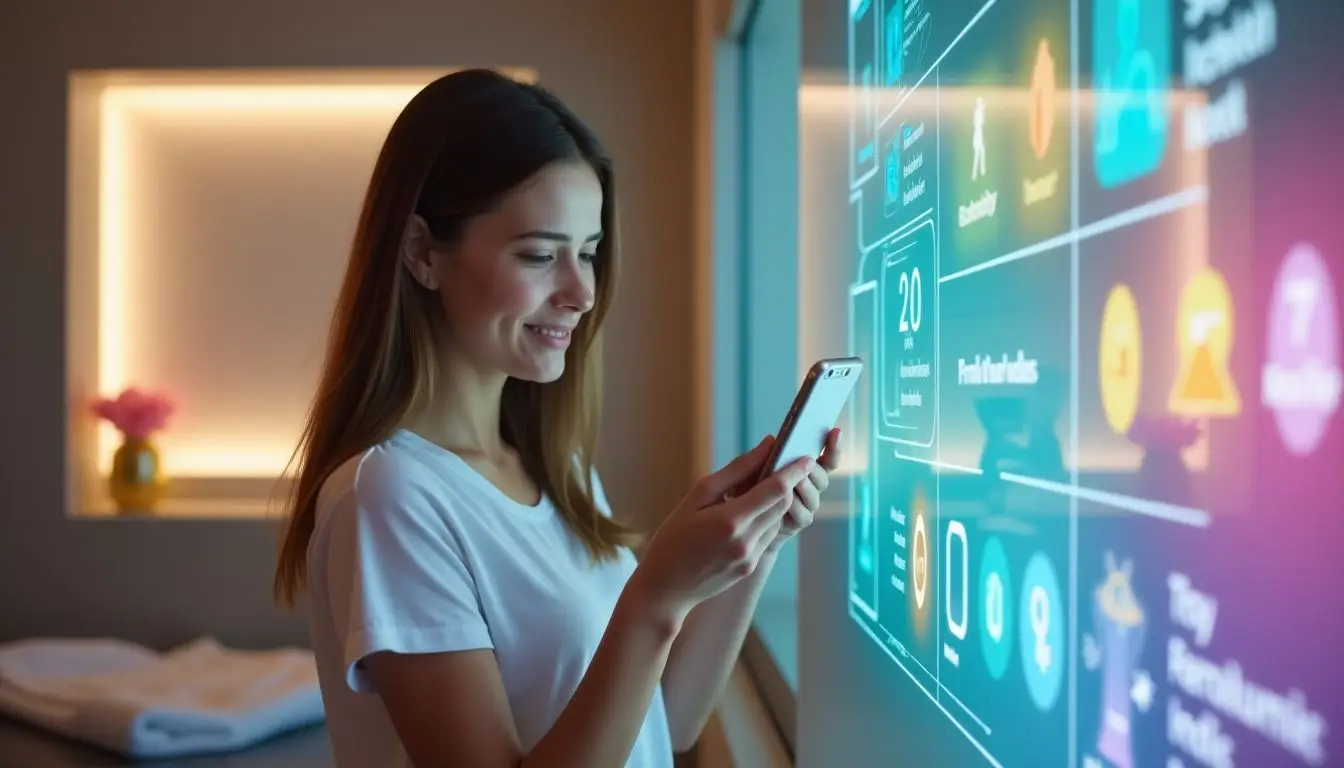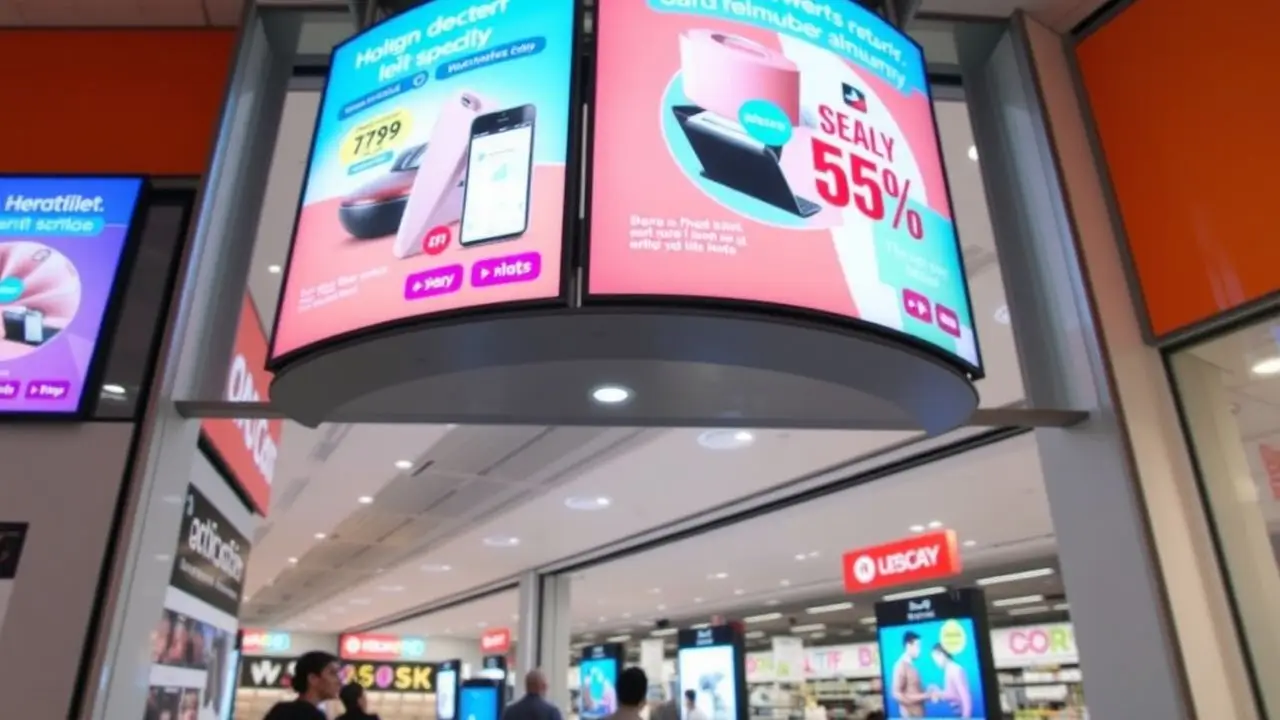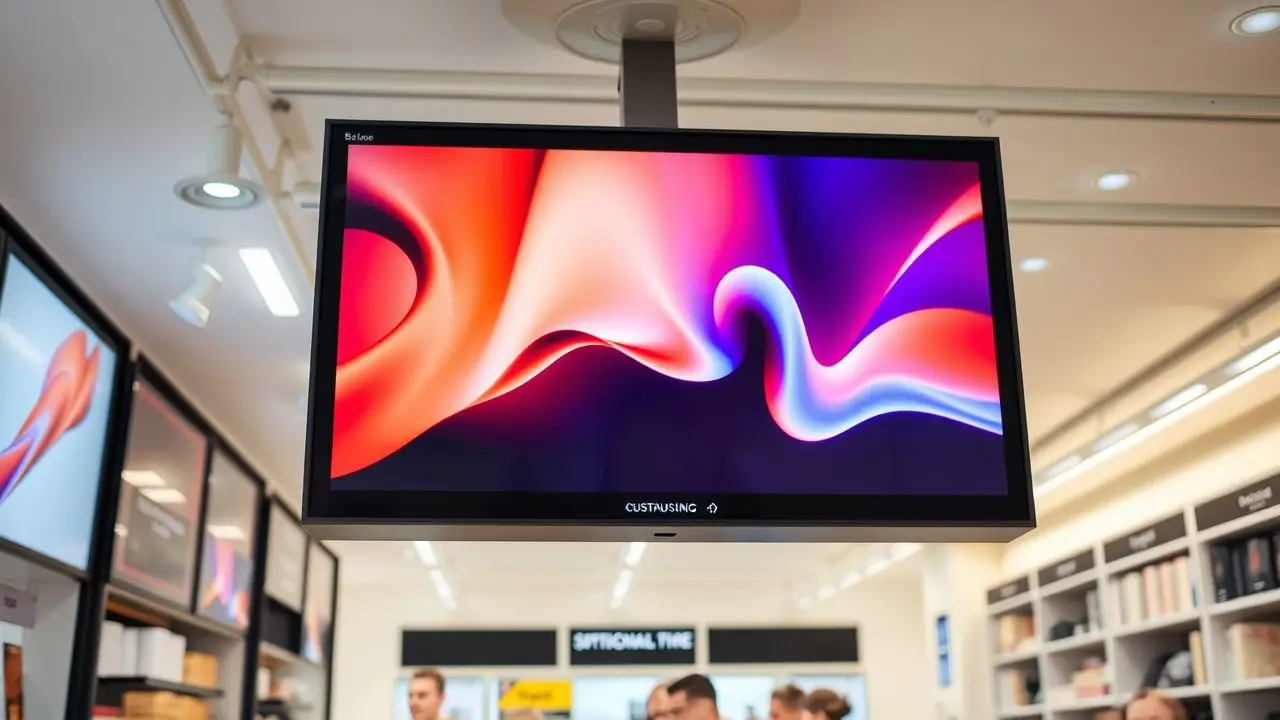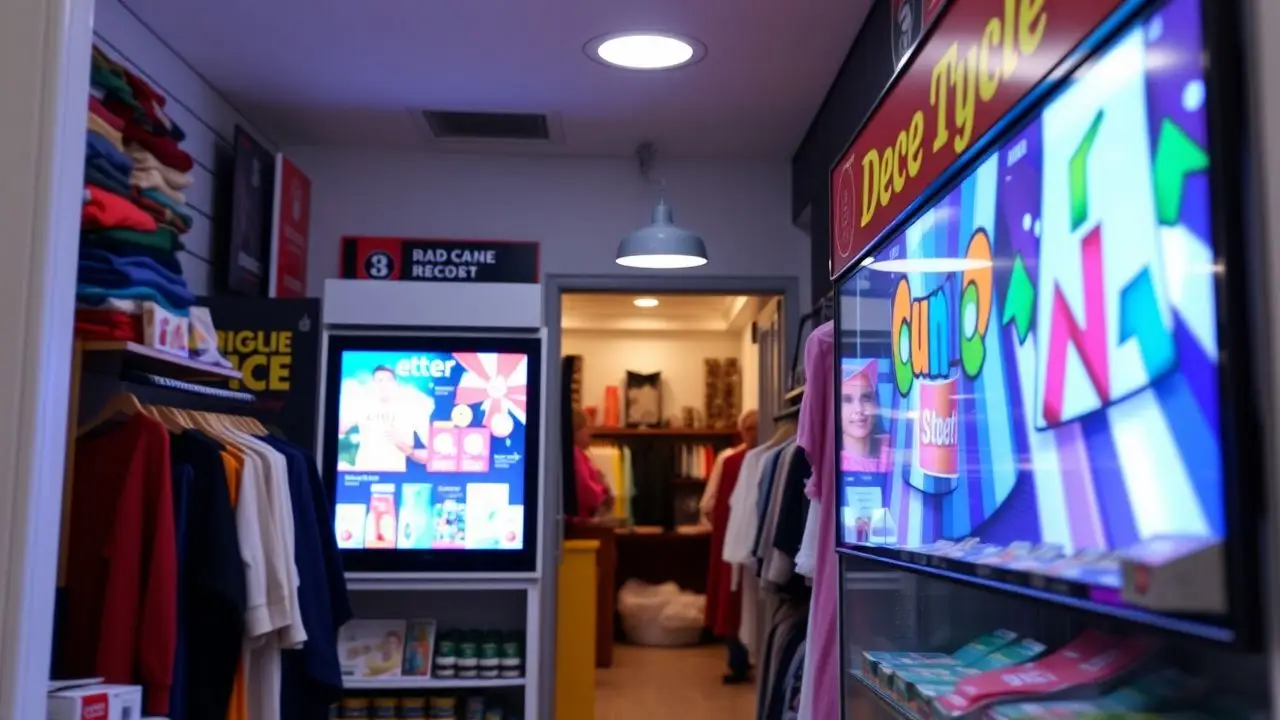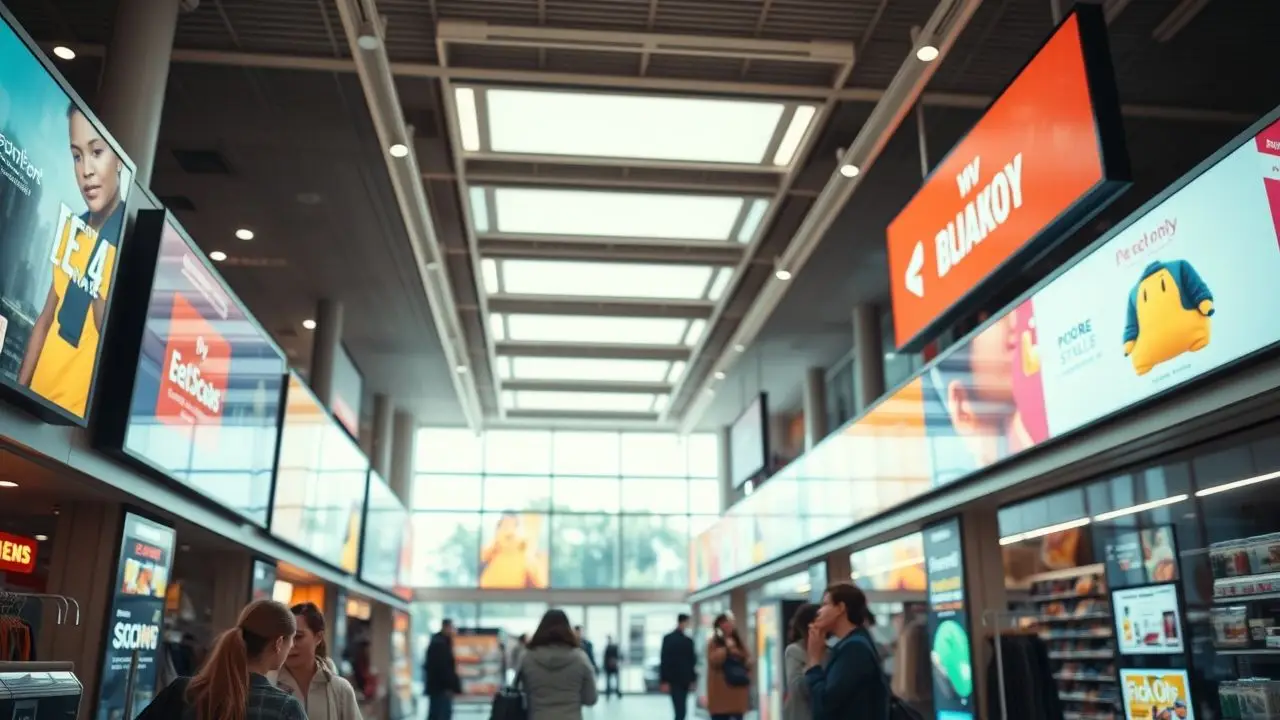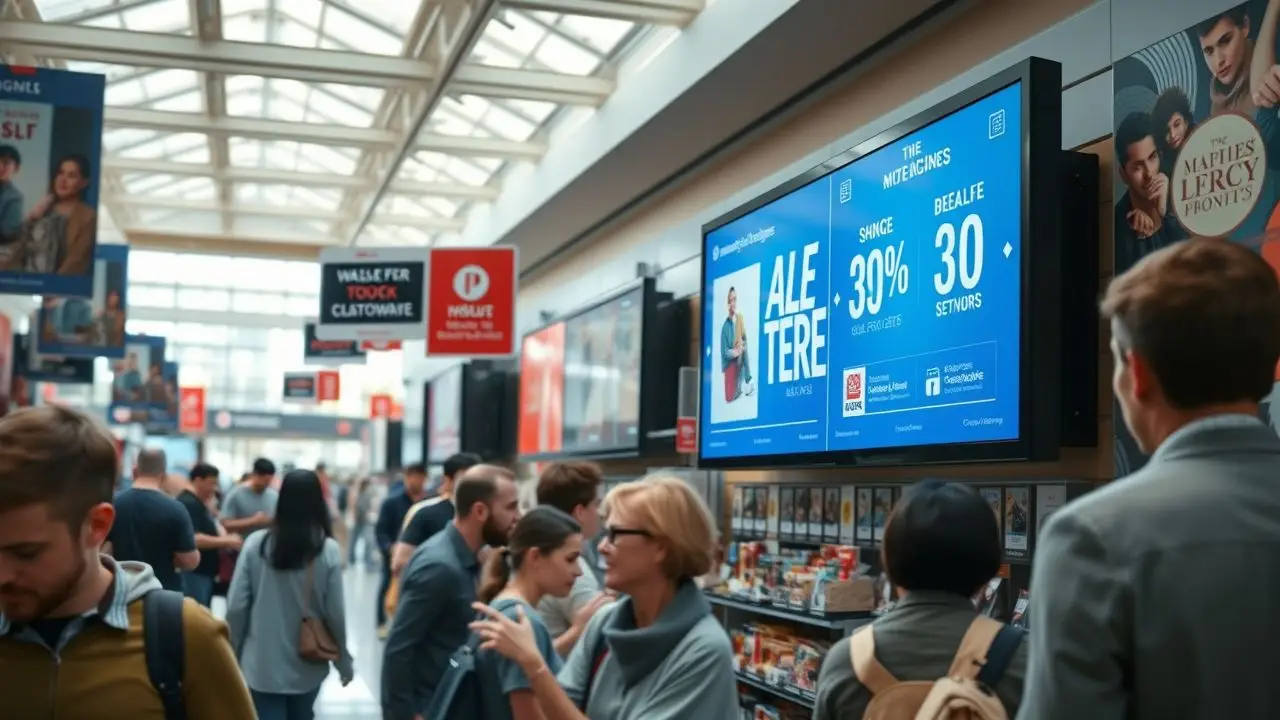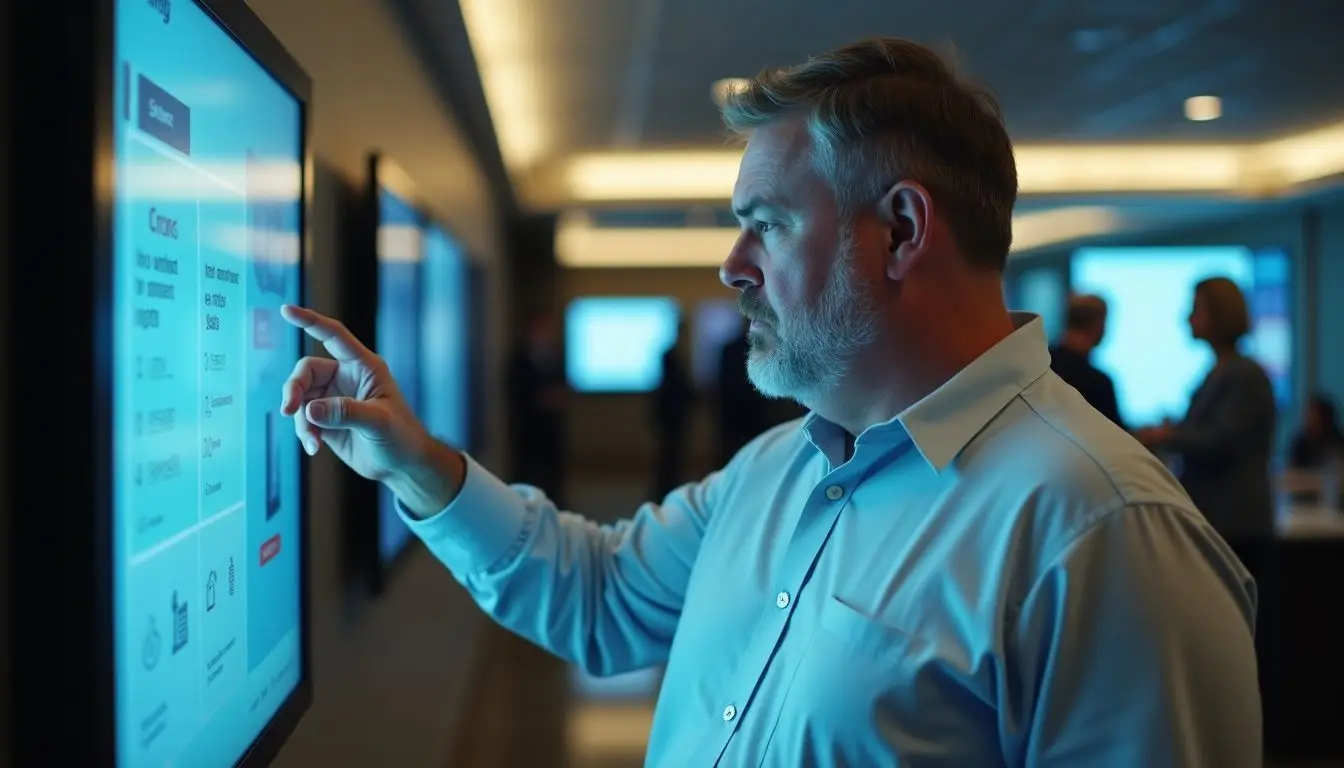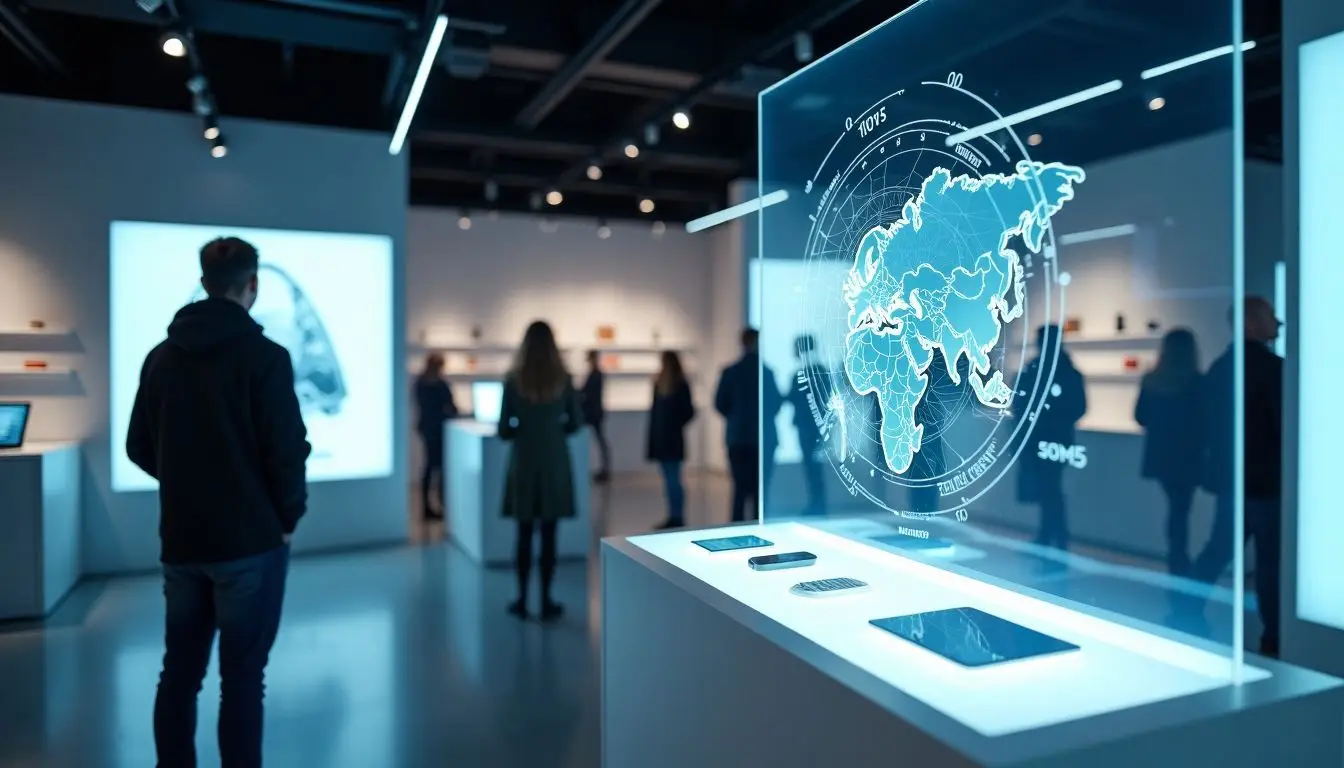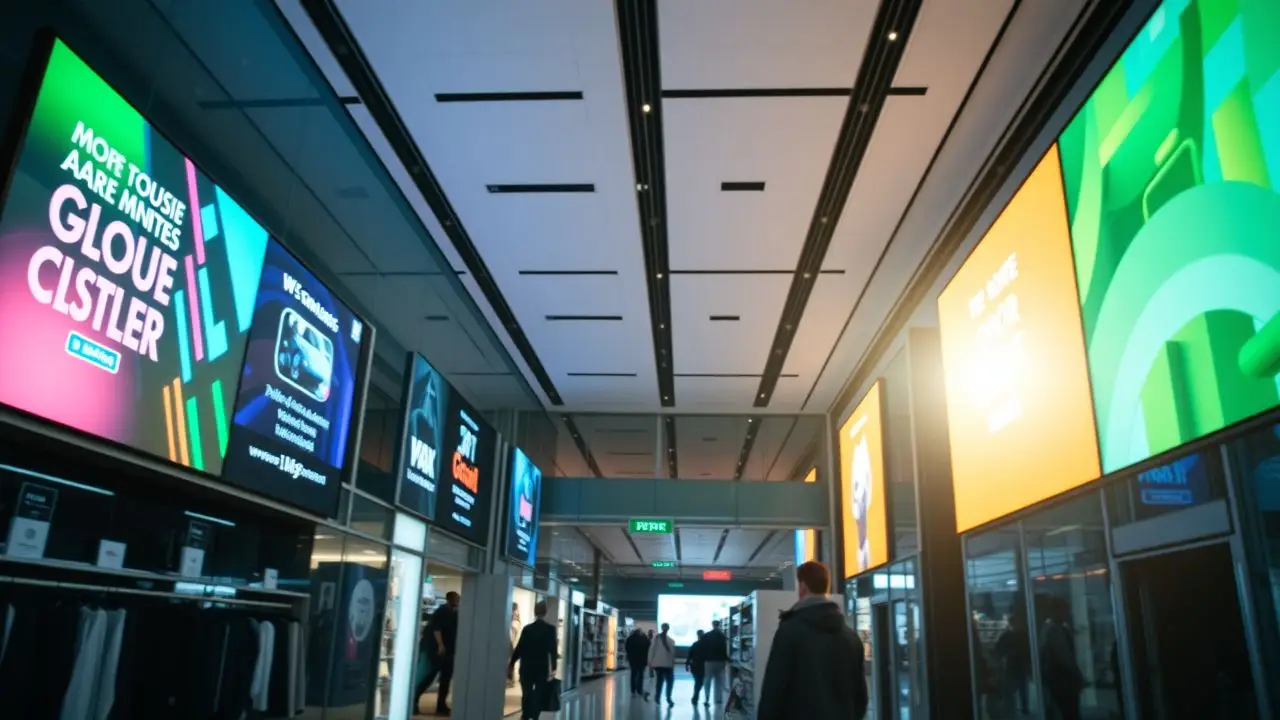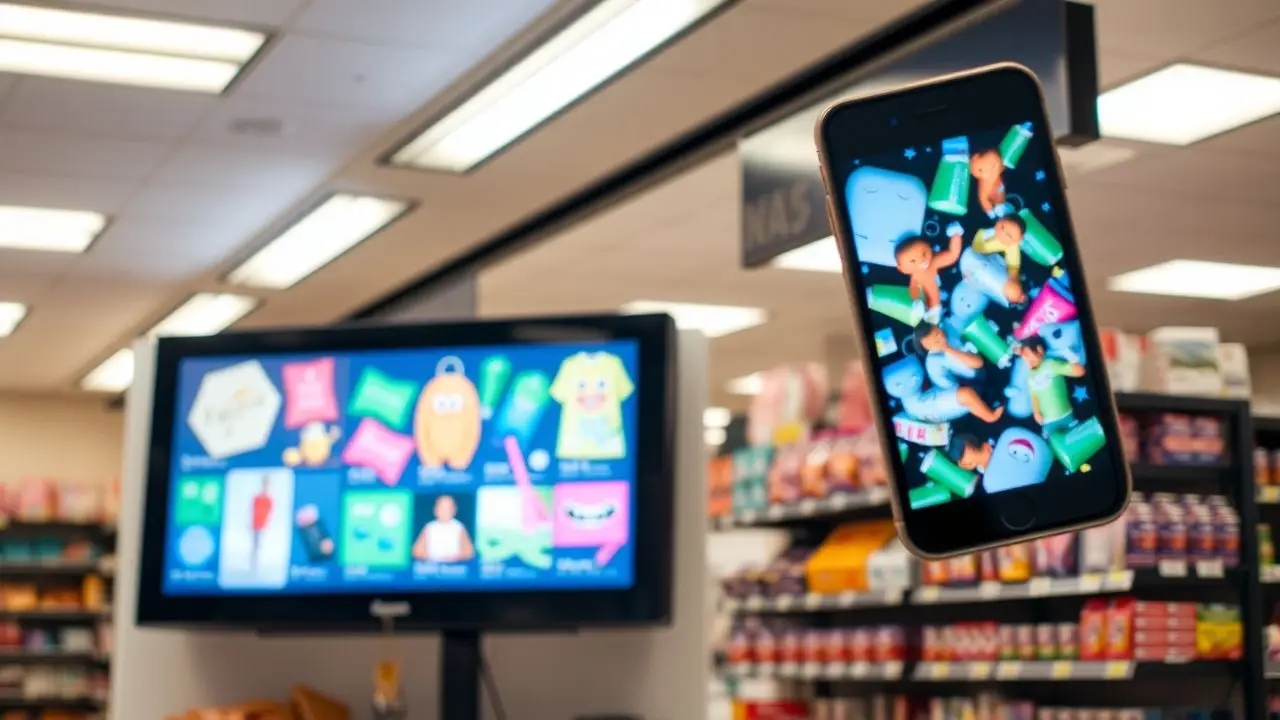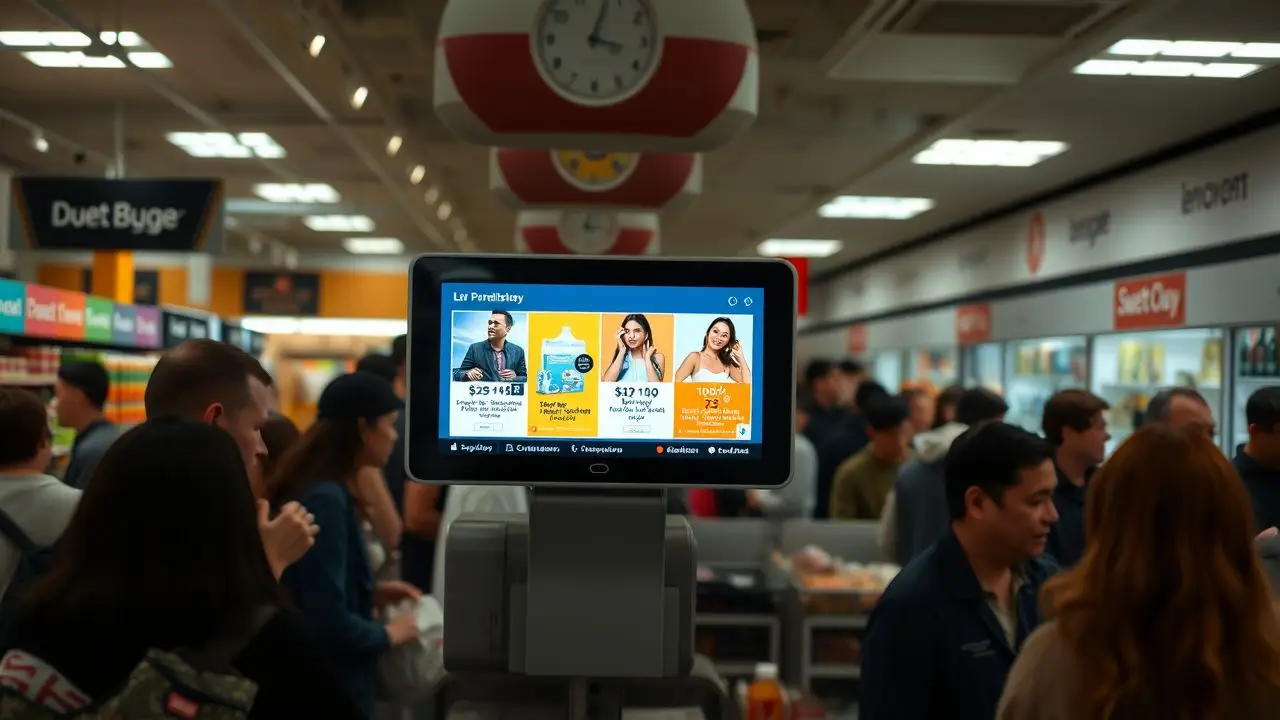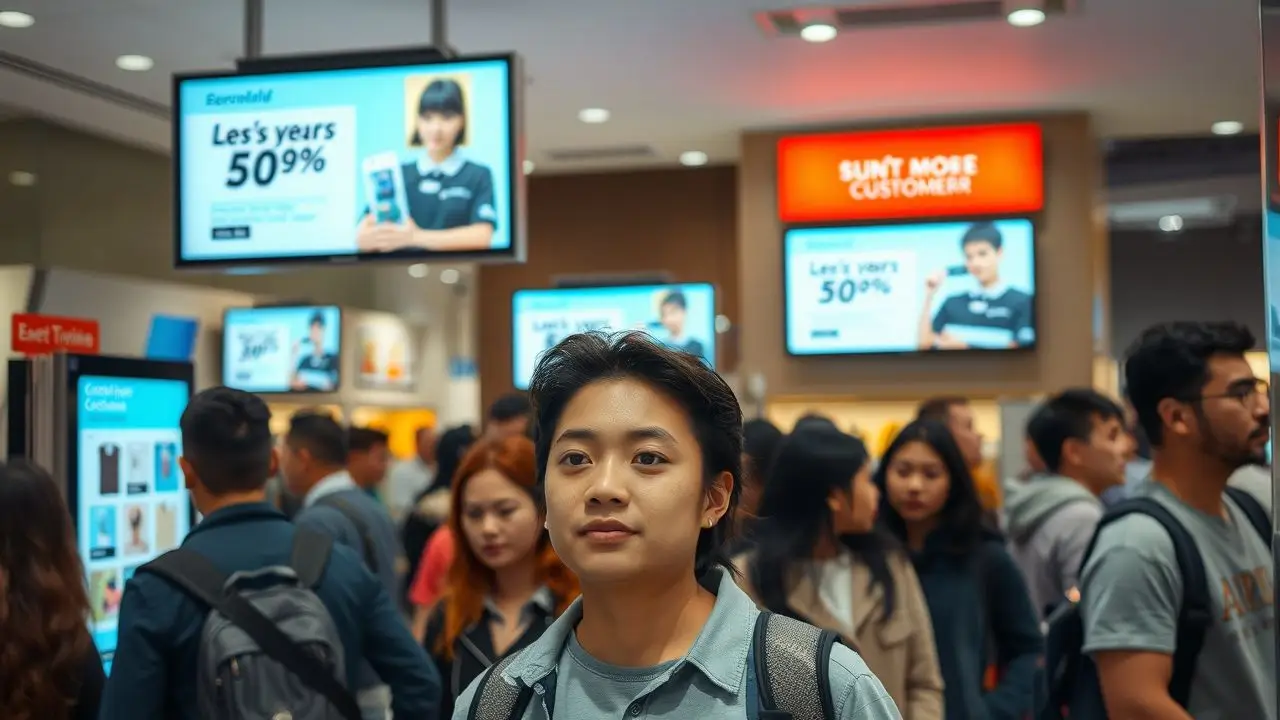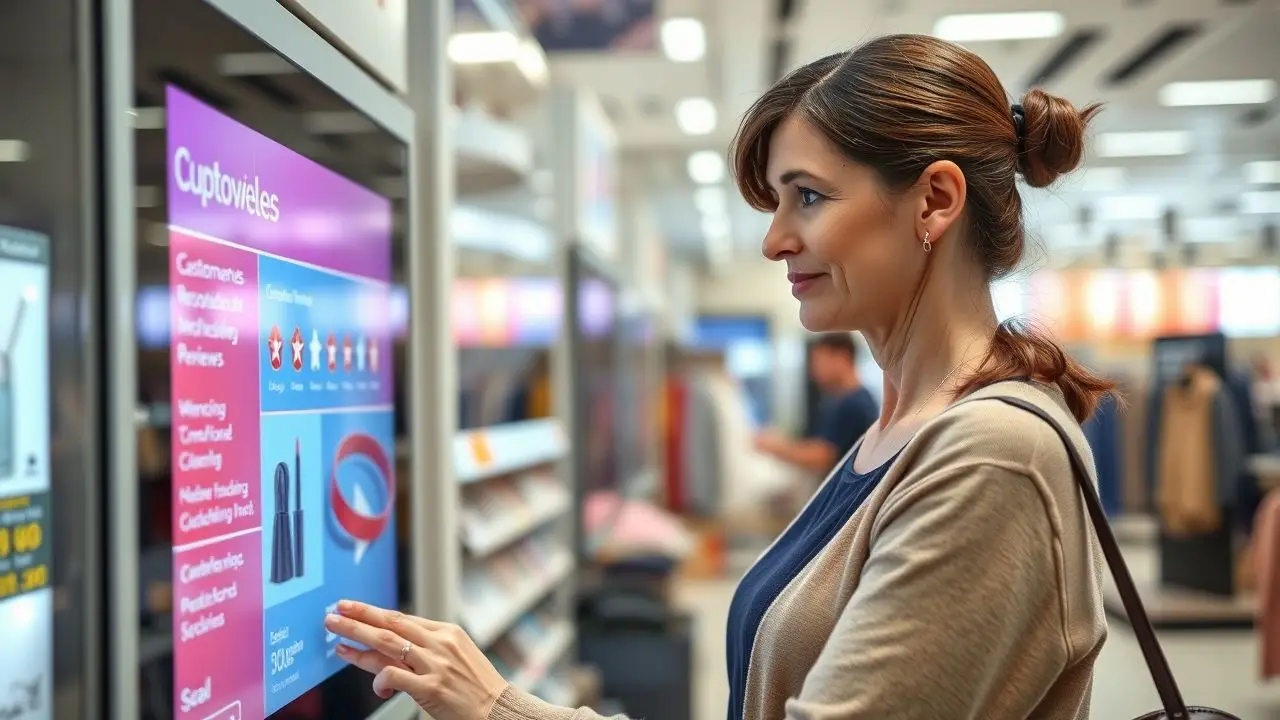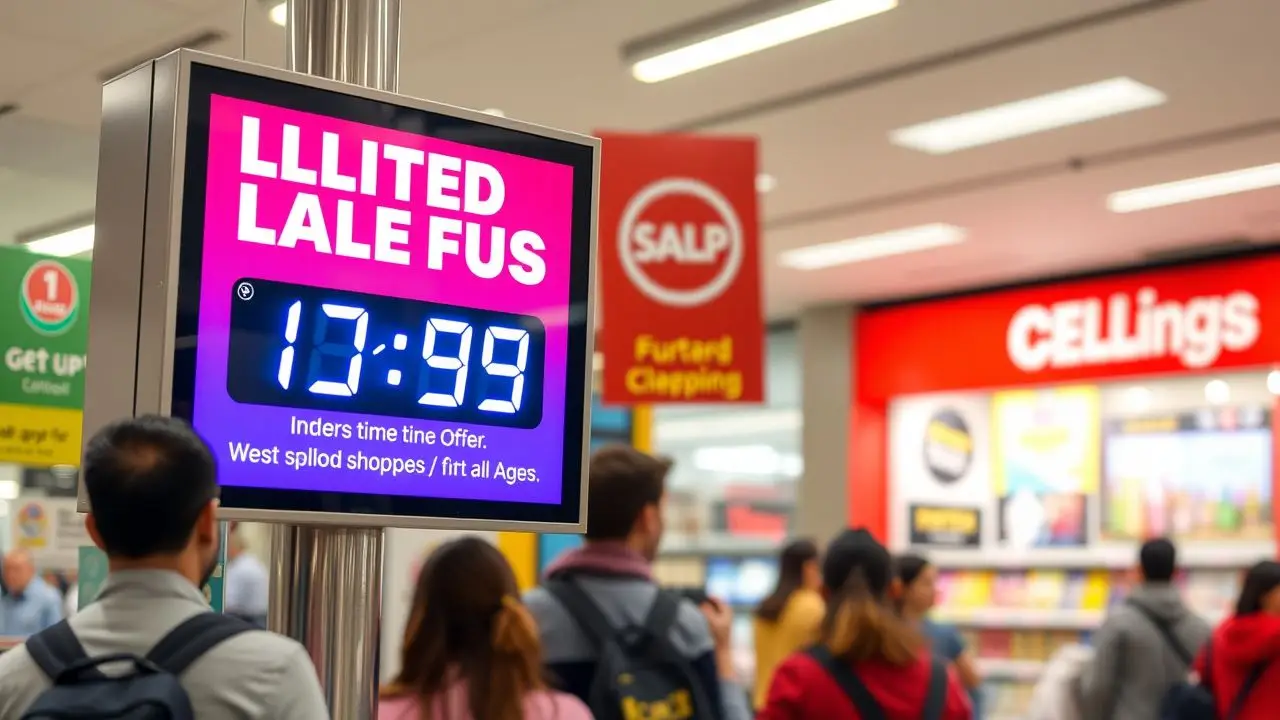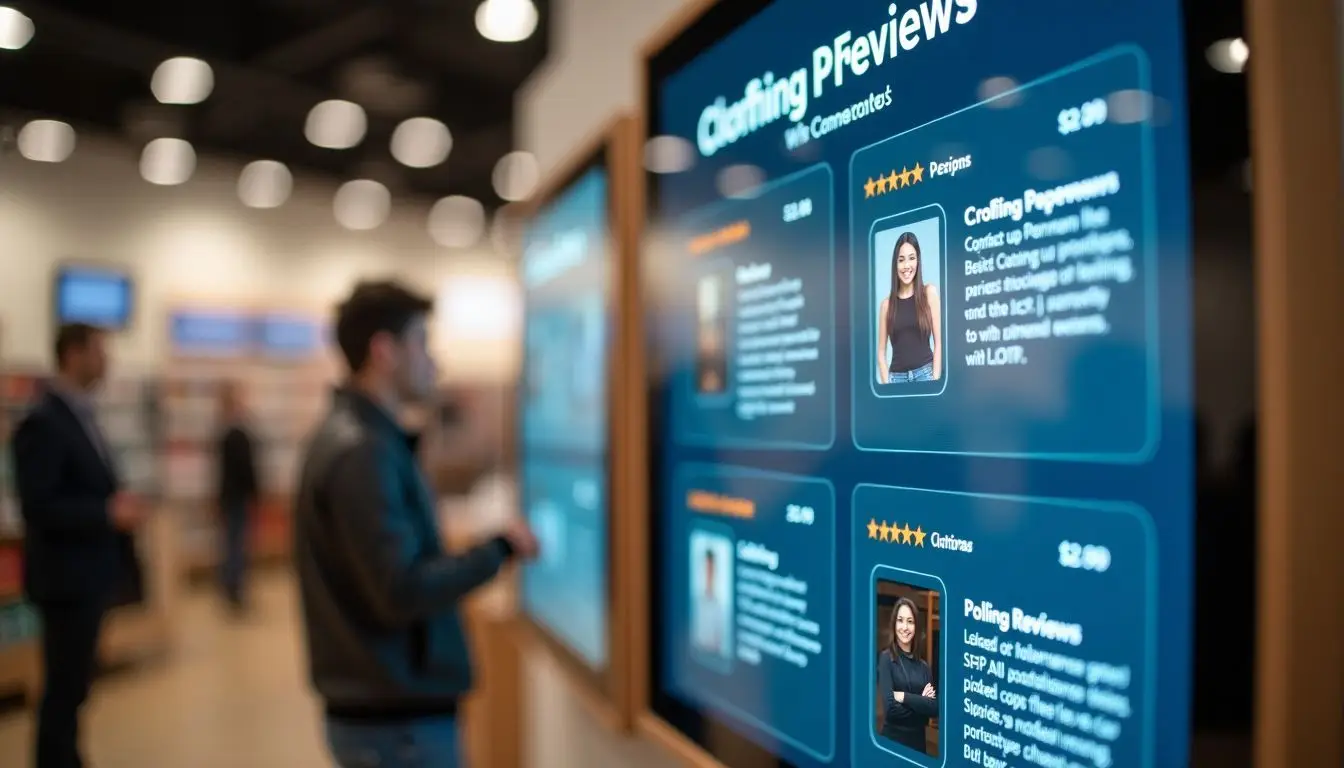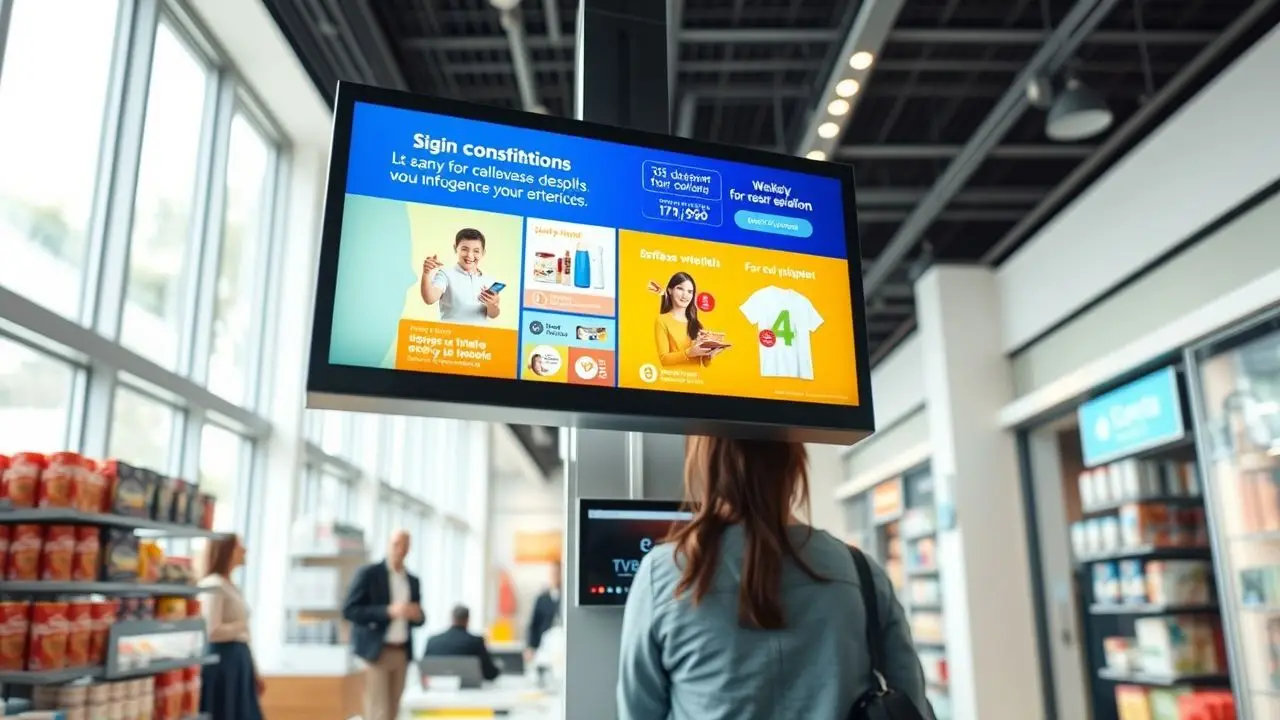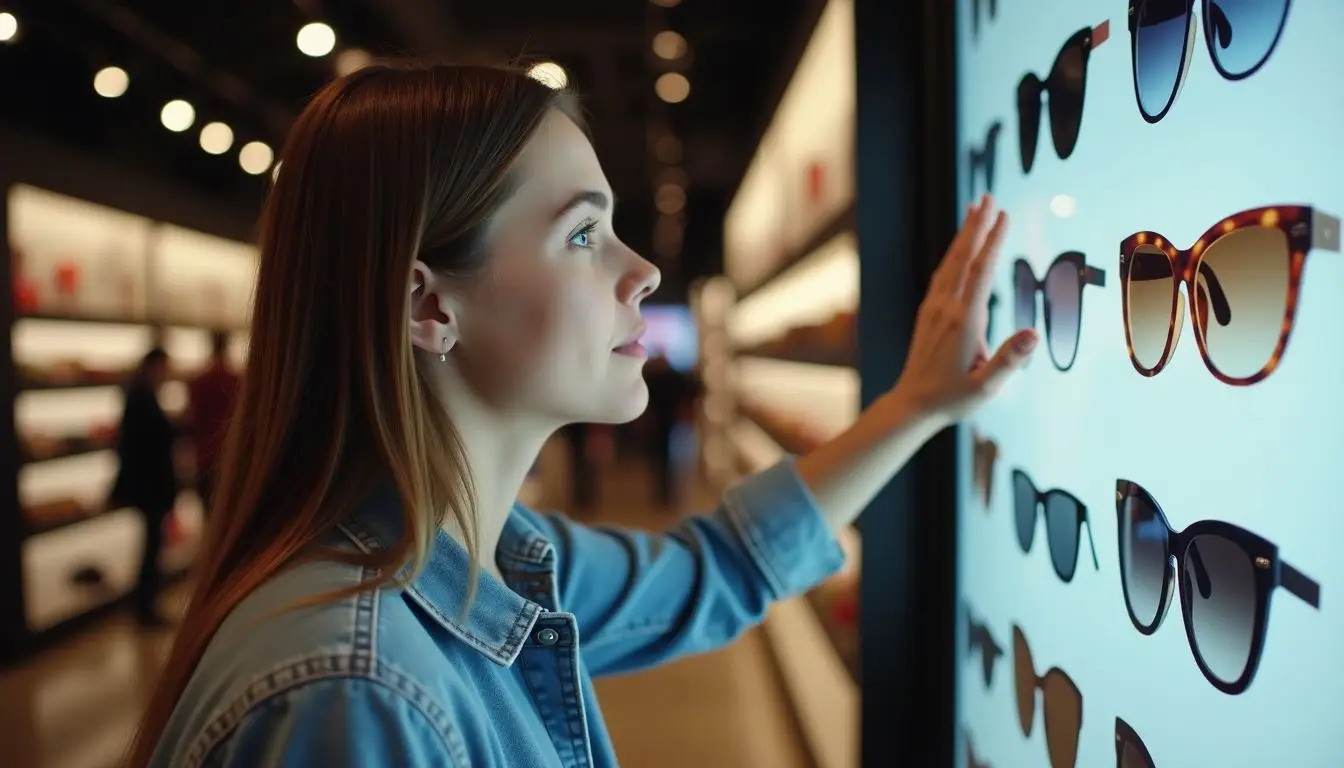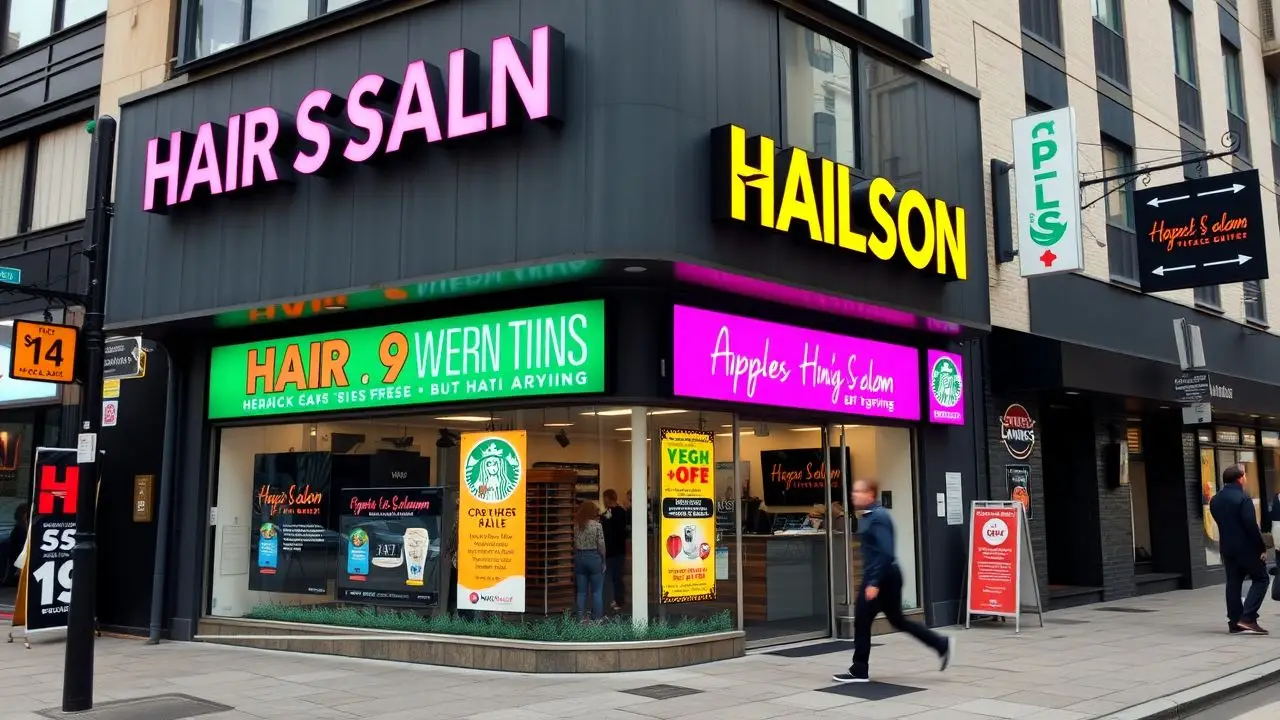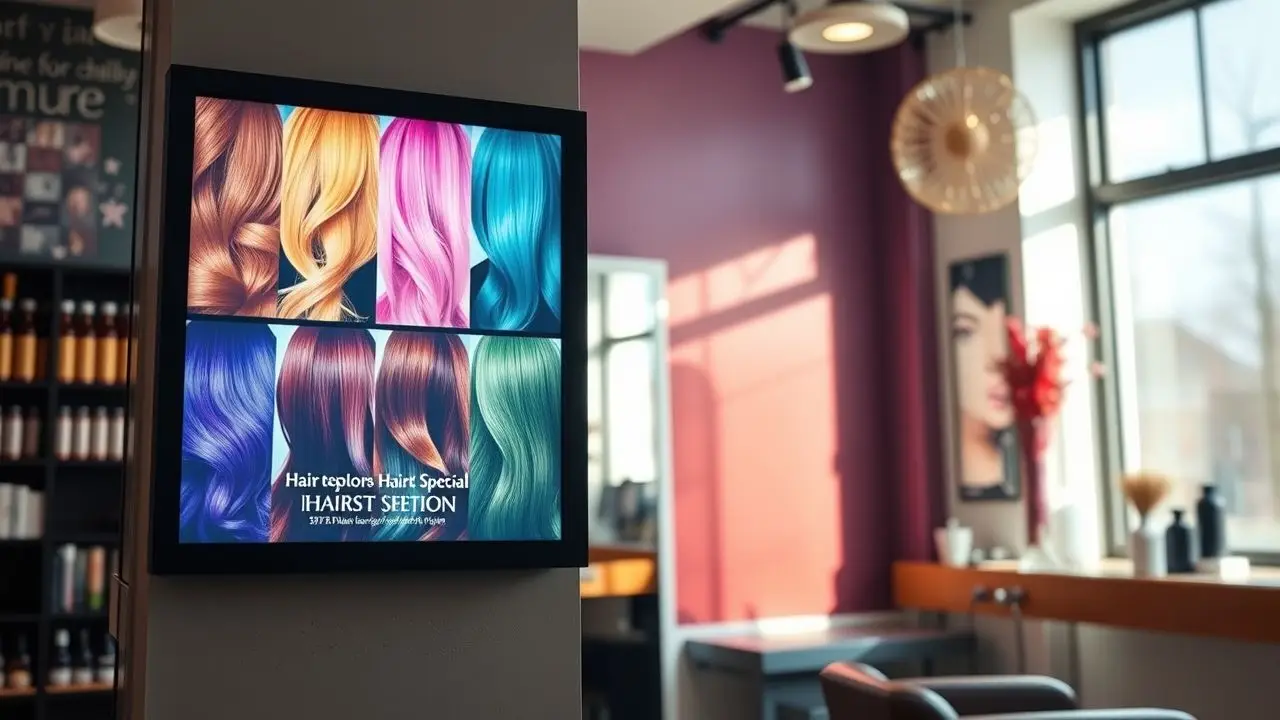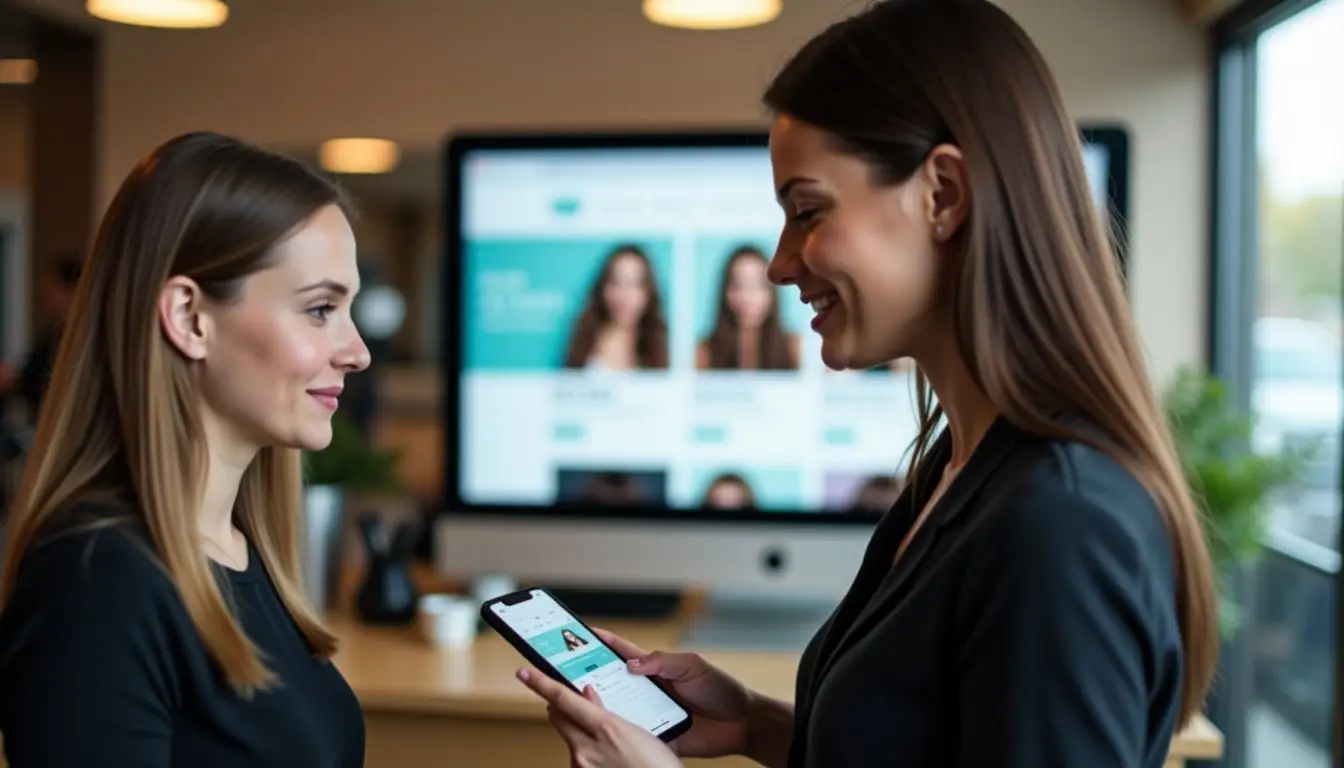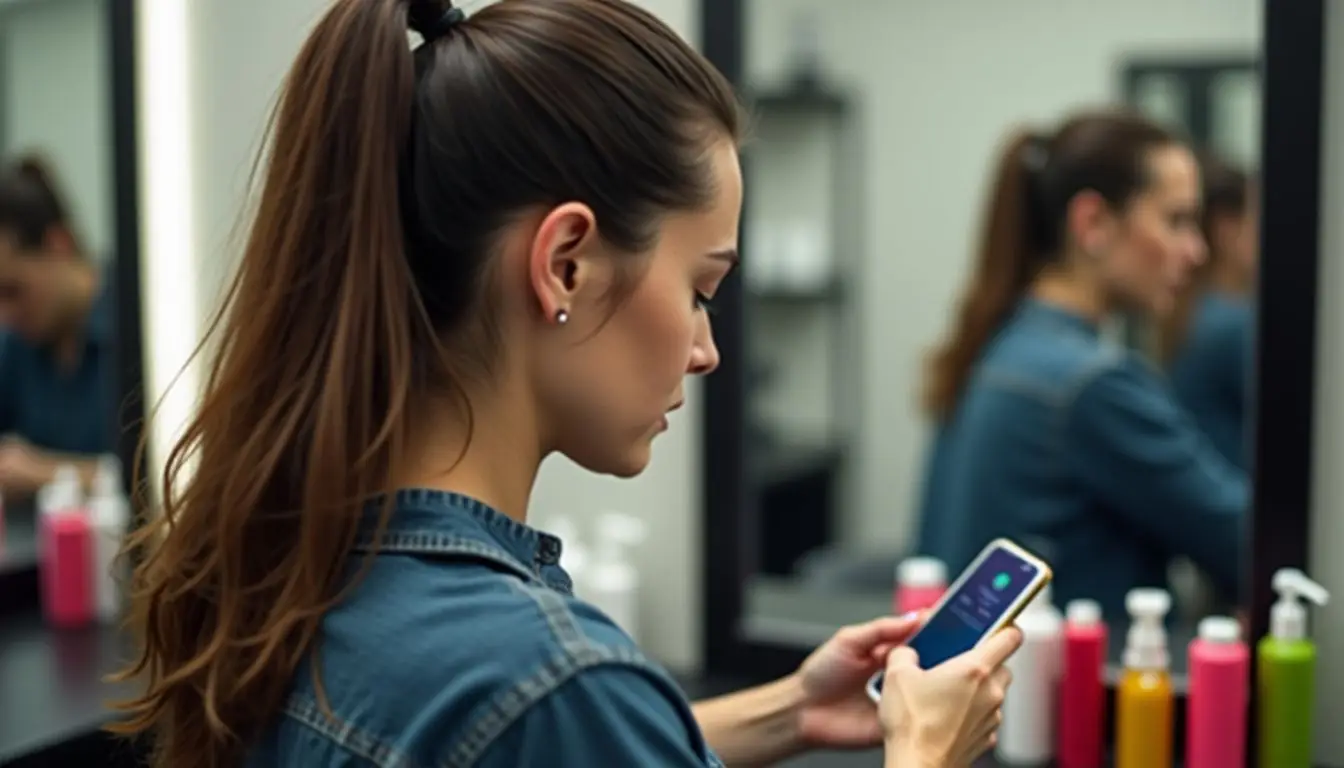Struggling to catch customers’ eyes? Digital signage offers a modern solution. This guide will show you how digital displays can boost sales and improve the shopping experience. Keep reading to learn more about retail digital signage.
Key Takeaways
- Digital signage helps retailers attract customers with bright displays and real-time updates.
- These signs can show sales, provide product info, and create interactive experiences in stores.
- Benefits include better customer engagement, updated content, and increased sales.
- Retailers can pick digital signage with features like easy content management and integration with other systems.
- Using digital signs in different places like healthcare or hospitality also improves communication and enhances visitor experiences.
Understanding Digital Signage in Retail

Digital signage is changing how retailers connect with customers. It offers new ways to show products and share information in stores.
Types of digital signage
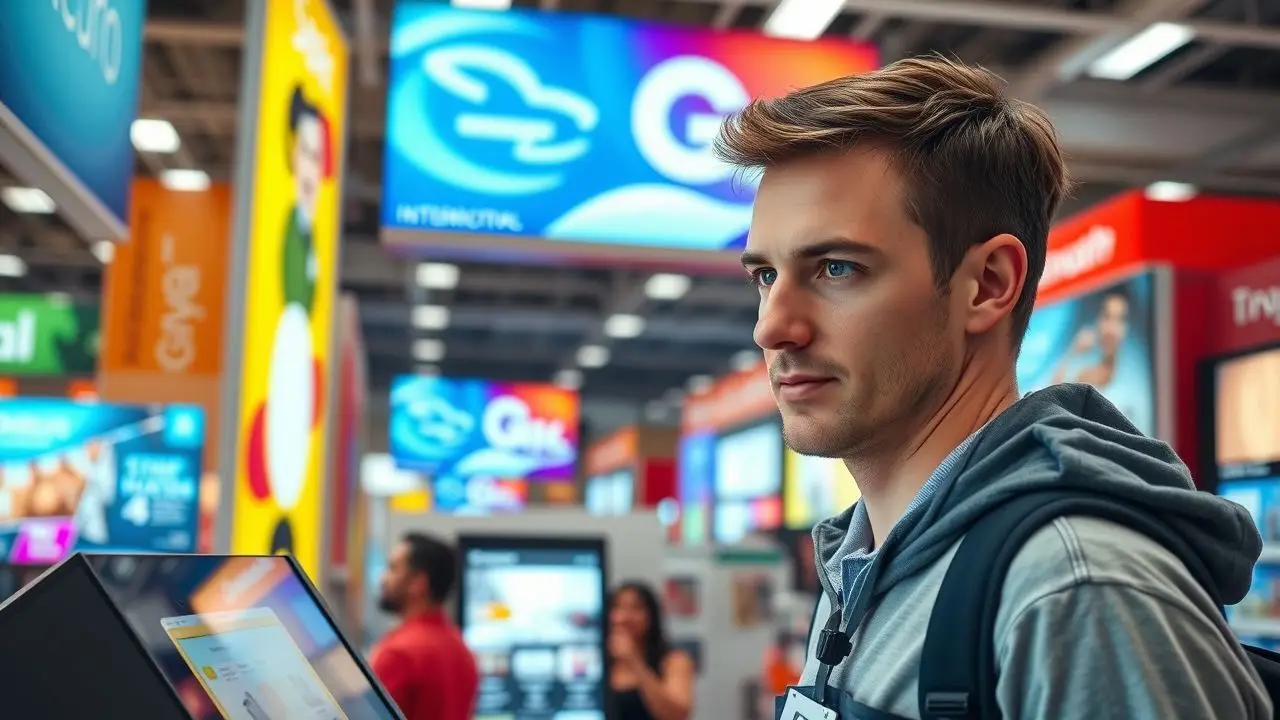
Digital signage plays a key role in retail. It helps engage customers and boost sales. Here are the types of digital signage used in retail:
- Digital displays show product promotions. They attract customers’ attention with bright colors and images.
- Video walls create immersive experiences. These large screens can display videos or ads that draw people in.
- Interactive kiosks let customers explore products. Shoppers can browse, get information, and even place orders themselves.
- Menu boards are common in quick-service restaurants. They update prices and items easily to keep customers informed.
- Point of sale displays highlight special offers at checkout. These signs can encourage impulse buys right before purchase.
- Wayfinding signs help navigate stores or malls. They assist customers in finding their way to different sections or stores.
- Social media walls showcase customer posts and reviews. This increases engagement by including real-life feedback from shoppers.
- Queue management systems reduce wait times for customers. These displays inform patrons about their place in line, which enhances satisfaction.
- Event announcement screens promote upcoming sales or events. Retailers use these to draw attention to new launches or special days.
- Brand storytelling displays share the brand’s history or values visually. This builds connections between the brand and its audience.
Retail digital signage solutions offer many benefits for retailers, such as improving customer engagement and driving more sales through effective communication.
Applications in retail
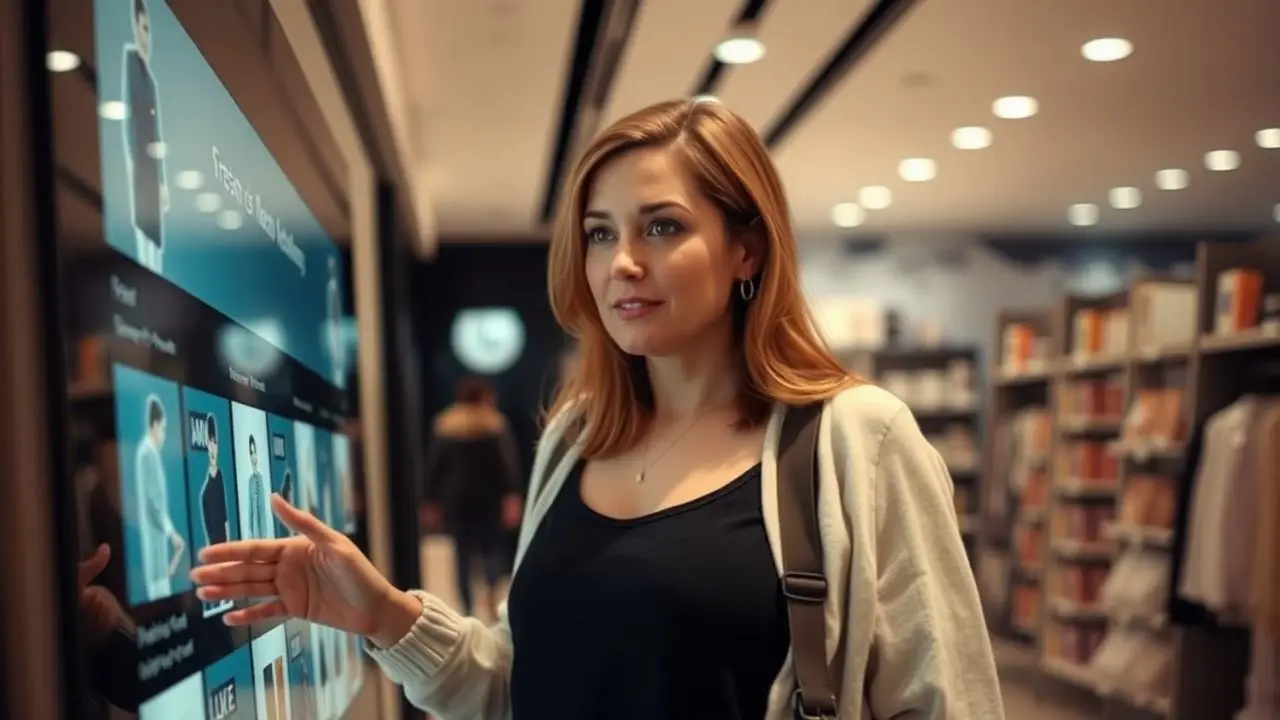
Digital signage has many uses in retail stores. Retailers can show special offers, product information, and promotions on screens. This helps catch shoppers’ attention and can boost sales.
For example, a sale sign on a digital display might attract more customers than a paper sign.
Another way to use digital signage is through interactive displays. Customers enjoy engaging with these screens. They can browse products or check prices easily. In-store displays also create a modern shopping experience that makes customers want to return.
Digital marketing for retailers often leads to happier buyers and increased foot traffic.
Benefits for retailers
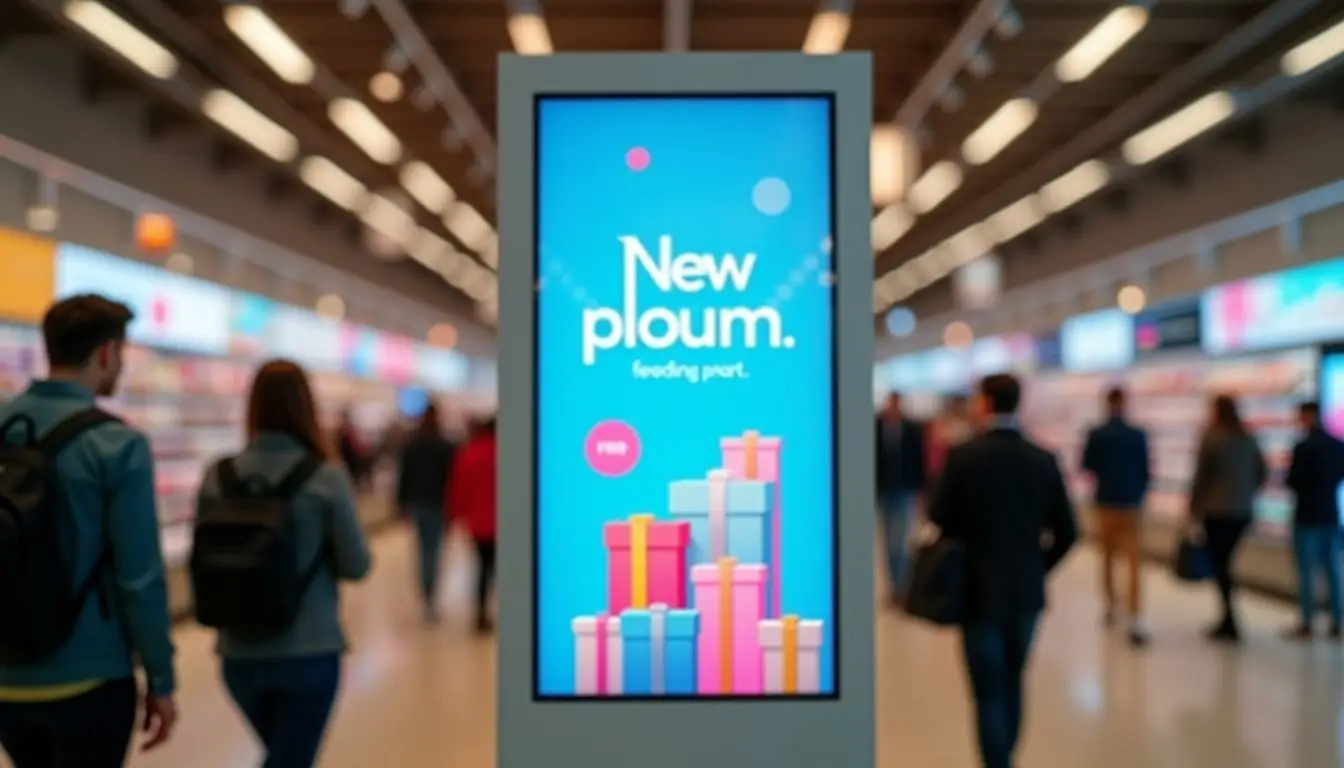
Digital signage provides many benefits for retailers. It can boost sales by catching customers’ attention. Retail digital store signage shows promotions and new products. This helps inform shoppers about offers they might have missed.
Retailers can also use digital displays to improve the shopping experience. Interactive digital signage for retail allows customers to learn more about items easily. These screens can provide product details, prices, and even suggestions based on needs.
With real-time updates, businesses keep content fresh and engaging. Digital advertising for retail increases customer interest and encourages purchases in a fun way.
Utilizing Digital Signage in Hospitality and Healthcare

Digital signage plays a key role in hospitality and healthcare. It helps improve guest experiences and streamlines communication in medical settings.
Use cases in the hospitality industry
Digital signage can change how hotels and restaurants communicate. It creates a lively atmosphere for guests.
- Menus in Restaurants: Digital displays show menus on screens. They can be updated easily to reflect changes, special offers, or daily specials. This keeps customers informed and engaged.
- Wayfinding: Hotels use digital signs to guide guests around the property. Screens at entrances or lobbies display maps and directions. This helps visitors find their rooms or amenities without confusion.
- Event Information: Venues display information about events on digital boards. Guests see schedules for conferences, meetings, or entertainment options clearly. This keeps everyone informed about what’s happening.
- Promotions: Hospitality businesses often showcase promotions on screens. Special deals can entice guests to dine at a restaurant or book services like spas and tours. Eye-catching visuals attract attention.
- Customer Feedback: Some places use touchscreens for guest feedback and reviews. This encourages customers to share their thoughts in real-time. Restaurants and hotels gain insights to improve service immediately.
- Entertainment: Waiting areas benefit from screens that play videos or ads for local attractions and services. Guests stay occupied while waiting for services like check-in or dining.
- Social Media Displays: Businesses showcase social media feeds on screens, promoting engagement with the brand online. This helps create a sense of community among guests.
- COVID-19 Safety Measures: Digital signage informs guests of safety protocols during the pandemic, such as mask-wearing guidelines or capacity limits in common spaces.
- Room Information: Digital signs outside meeting rooms show schedules and availability in real time for easy access by attendees.
- Interactive Touchpoints: Some hotels offer interactive kiosks with information about nearby attractions, dining, and activities to enhance guest experience further.
Utilizing retail digital signage solutions transforms hospitality operations into effective communication tools that enrich customer experiences.
Impact on healthcare facilities
Digital signage plays a key role in healthcare facilities. It helps to inform patients and visitors quickly. Patients can see wait times, directions, and important updates on displays.
These screens also promote services and health tips.
In hospitals, digital signs reduce anxiety for patients. They provide timely information that keeps people calm. Staff can use the technology for internal communication too. Clear messages about safety or changes in procedures improve staff awareness and teamwork.
Retail digital media solutions can enhance these efforts by making communication faster and more effective in healthcare settings.
Advantages for these industries
Digital signage offers many advantages for hospitality and healthcare. In the hospitality industry, it helps with clear communication. Guests see information about services and events quickly.
This leads to happier customers and better sales boost.
In healthcare, digital screens improve the patient experience. They display important information like wait times and health tips. Staff can communicate more effectively too. These benefits make retail digital signage a smart choice for both sectors.
Implementation in Offices

Digital signage can boost communication in offices. It keeps team members informed and engaged. Eye-catching displays make the workplace more inviting. Employees enjoy a better experience with clear messages.
Discover how digital signage can transform your office space!
Benefits for internal communication
Clear internal communication helps a business run smoothly. Retail digital signage is a great tool for this. It shares important messages quickly with staff. Employees can see updates on schedules, events, or policies right away.
Using digital displays in offices keeps everyone informed. Staff feel more connected to the company’s goals and values. This leads to better teamwork and productivity. Making information easy to access enhances workplace culture and satisfaction among employees.
How it can enhance office spaces
Digital signage can make office spaces better. It helps with internal communication. Teams can share messages quickly and easily. Signage displays show important updates, meeting schedules, and news in real time.
This keeps everyone informed.
These digital screens also add energy to the workspace. They create a modern look that impresses visitors and staff alike. Engaging content keeps employees motivated during their workday.
Retail technology like this improves both mood and productivity in any office setting.
Key Factors to Consider when Choosing a Digital Signage Solution
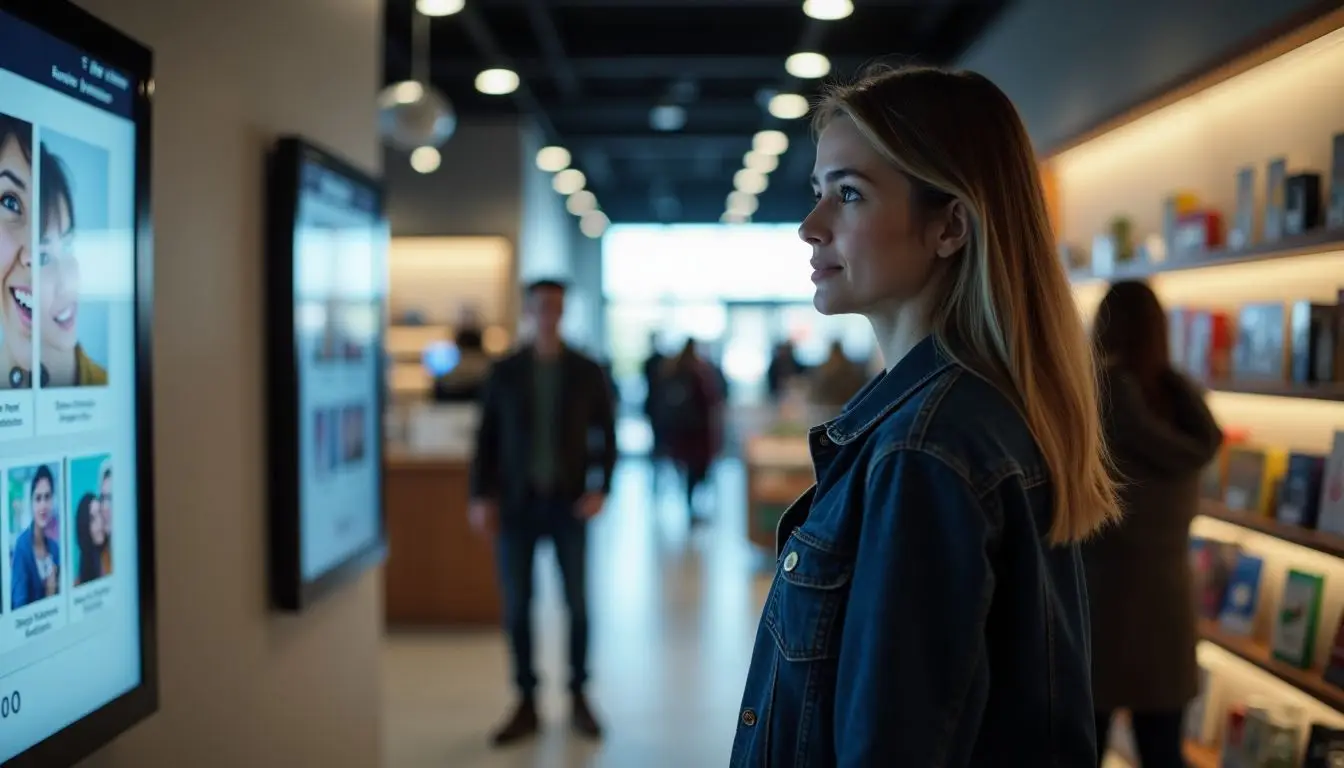
When choosing a digital signage solution, focus on content management features, integration options, real-time updates, reporting tools, and interactive elements to meet your retail needs.
To learn more about each factor, keep reading!
Content management capabilities
Content management capabilities are key for digital signage. Retailers need an easy way to manage the content on their displays. Good software lets users update messages quickly and easily.
They can schedule ads or change them in real-time. This means fresh information for customers every day.
A strong content management system also allows integration with other tools. It works well with retail marketing systems, so stores can run campaigns smoothly. In-store displays become more effective this way.
For example, some retailers use data to show targeted offers based on customer behavior. These features help create a better shopping experience and boost sales in the retail industry.
Integration capabilities
Integration capabilities are key for digital signage. Retailers need their displays to connect easily with other systems. This includes point-of-sale systems, inventory management tools, and social media platforms.
Such connections help gather real-time data.
Retail signage solutions that integrate well can update content quickly based on sales or promotions. By using digital signage software for retail, businesses can create dynamic and engaging instore displays.
First-hand experience shows that seamless integration boosts communication and makes marketing strategies more effective in stores.
Real-time updates
Real-time updates keep digital signage fresh and relevant. Retailers can change messages instantly. This capability helps to promote sales or new products quickly. For example, a store can display discounts on items that just arrived or highlight special events happening that day.
These updates enhance customer engagement. Shoppers appreciate timely information as they browse the retail store. With retail digital signage implementation, stores can respond to changes in stock or customer trends right away.
This flexibility is key for success in today’s fast-paced market.
Reporting and analytics
Reporting and analytics are key for digital signage in retail. They help retailers see how well their displays are working. With these tools, you can track sales data and customer engagement.
Retailers can find out which content is popular and which isn’t.
Using reporting features allows quick adjustments to displays. For example, if a certain ad does not attract attention, it can be changed right away. This leads to better decisions on future campaigns.
Knowing what works helps improve overall performance of retail digital screens and signage solutions.
Interactive features
Interactive features make digital signage more engaging. They allow customers to interact with displays and find what they want easily.
- Touchscreens let customers browse products at their own pace. Shoppers can explore items in detail and check prices.
- QR codes link to websites or special offers. Customers can scan these codes with their phones for instant access.
- Social media feeds display real-time updates. Stores can showcase customer posts or promotions, keeping content fresh.
- Games and contests attract attention and boost engagement. Retailers can use fun activities to draw people in and create excitement.
- Personalized messaging shows relevant offers based on customer data. Brands can tailor content to individual preferences, improving the shopping experience.
- Wayfinding solutions guide customers through large stores. Maps on screens help people find departments quickly, making visits smoother.
- Feedback options allow shoppers to share opinions instantly. This input helps retailers improve services and products while making customers feel valued.
- Video walls create stunning visual experiences in busy areas like malls or airports. These eye-catching displays draw crowds and hold attention effectively.
- Event promotions keep customers informed about upcoming happenings at the store or nearby events in the community.
- Integration with inventory systems ensures displays show available stock in real-time, helping shoppers know if an item is in stock before heading to get it.
Using these interactive features enhances retail digital communication and engages customers effectively while boosting sales for businesses.
Conclusion

Digital signage can change how retailers connect with customers. It grabs attention and shares key messages quickly. This guide shows the many benefits of using digital displays in shops.
Retailers who embrace this technology will see better communication and engagement. Stay ahead by using digital signage to boost your store’s success.
FAQs
1. What is digital signage for retailers?
Digital signage for retailers refers to retail display technology that stores use to communicate with customers. It’s a key part of retail signage solutions.
2. How can digital signage displays improve my retail store?
Retail digital displays can enhance your store by attracting customer attention, promoting products, and improving in-store communication.
3. Can you share some digital signage best practices for retailers?
Sure! One best practice is to keep your content fresh and engaging. Another is to place your signs where they’re most visible and make sure the message matches the location within the store.
4. Is there a guide on how to effectively implement retail signage solutions?
Yes, “The Ultimate Guide to Digital Signage for Retailers” provides comprehensive information on implementing effective retail display technology strategies.
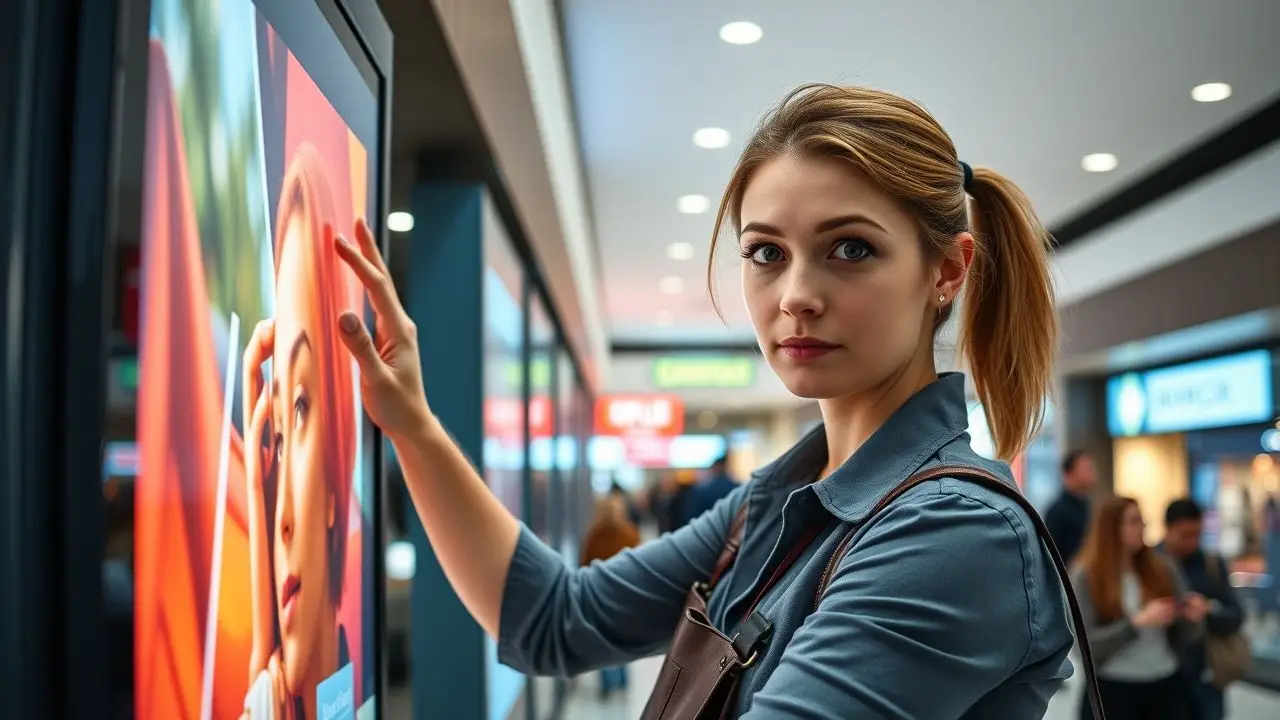


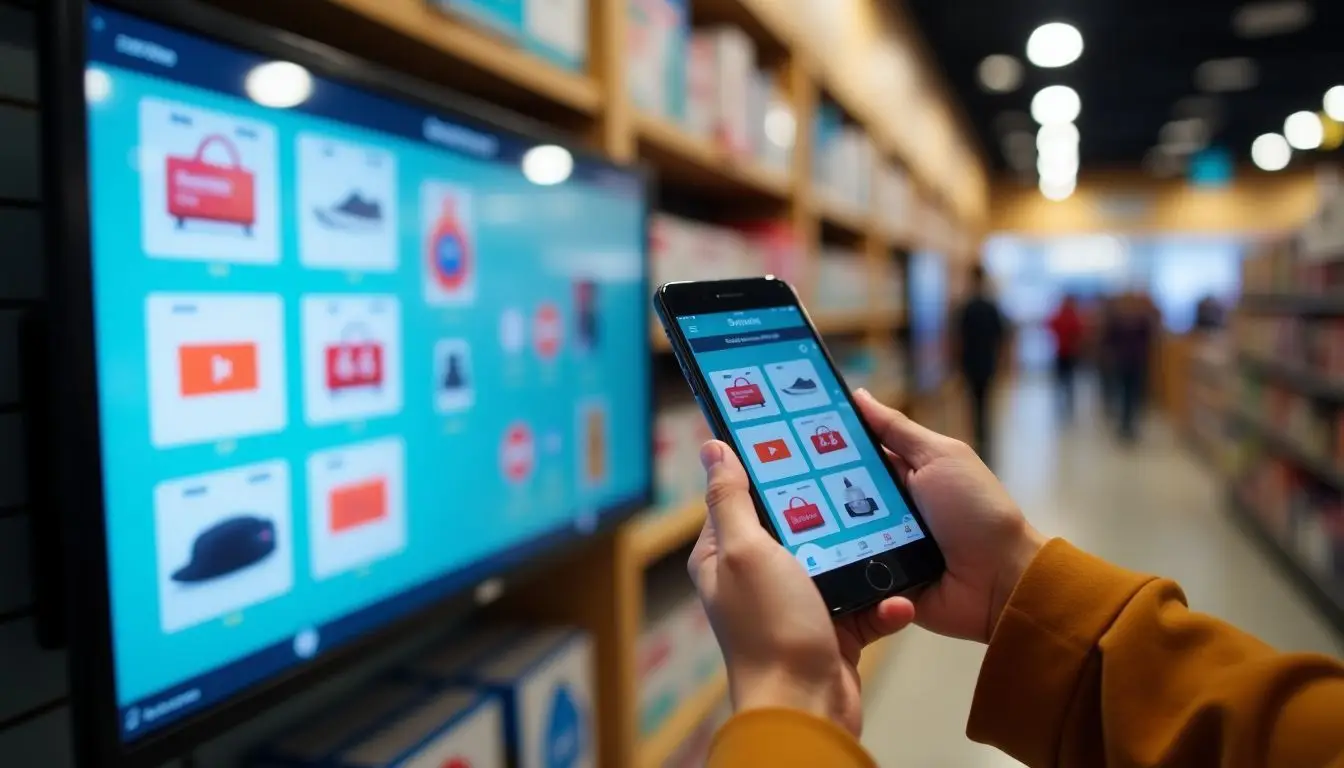
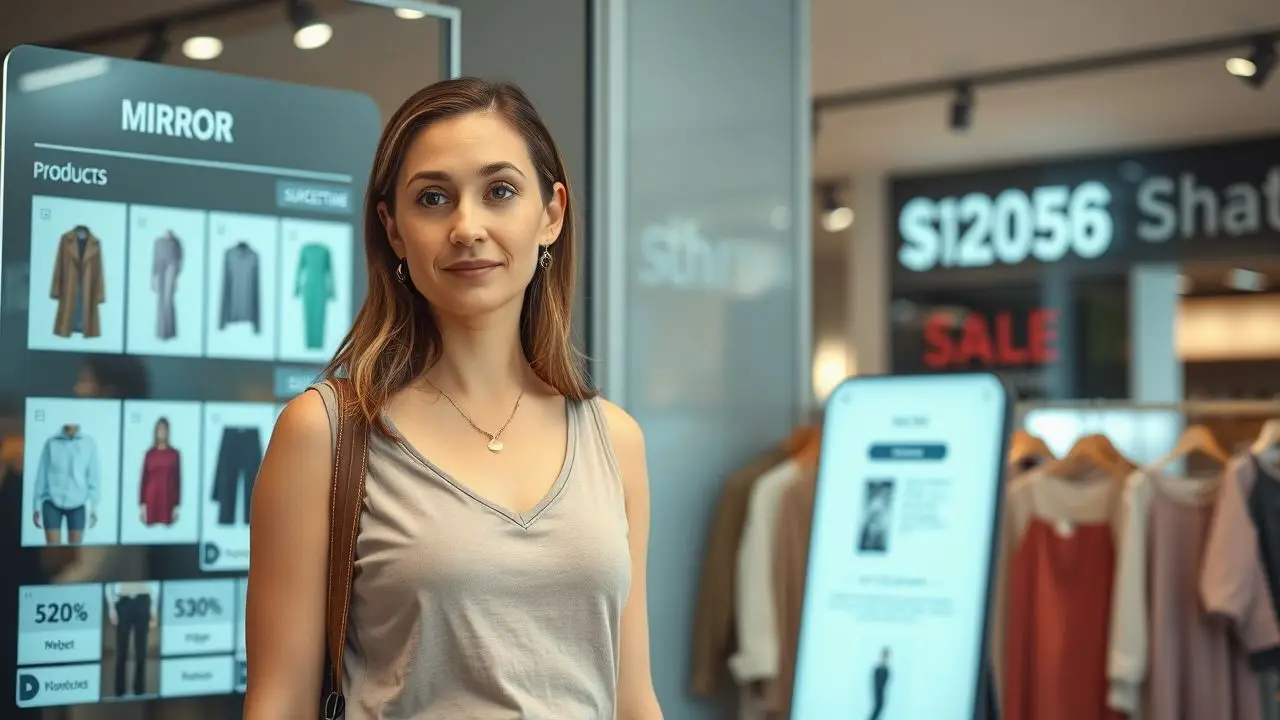

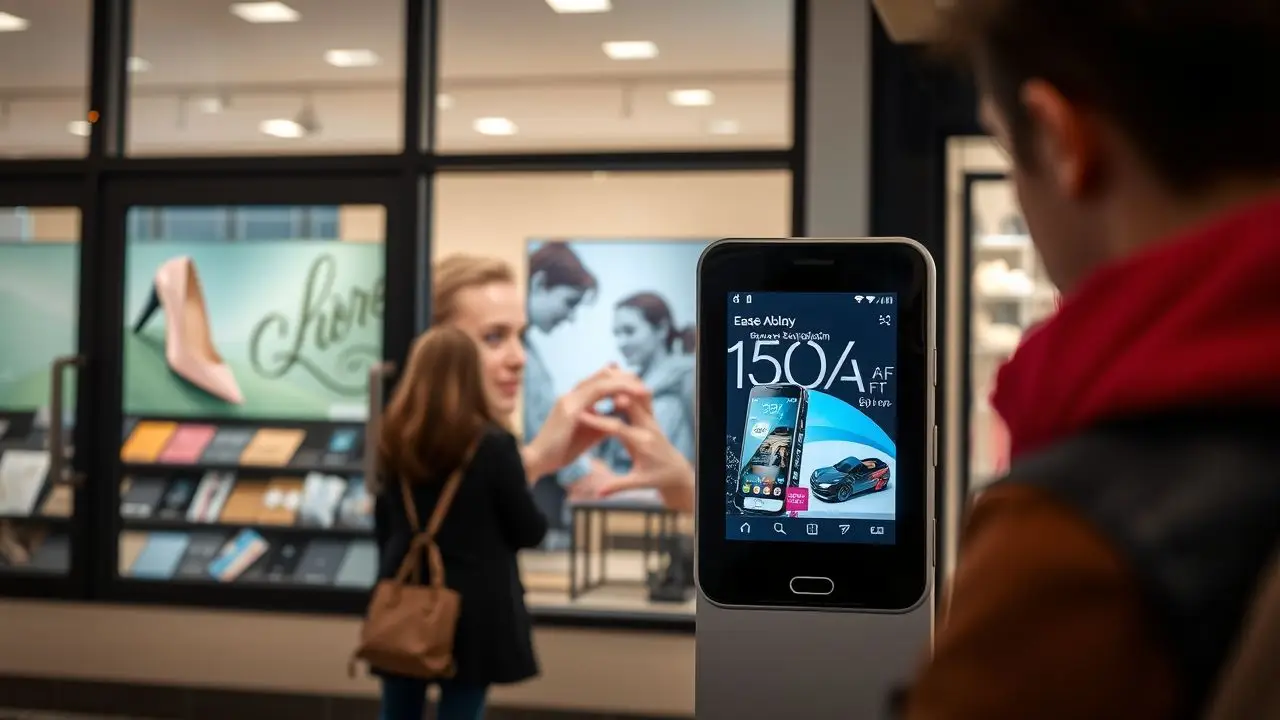 Placement strategies for digital signage are key to driving foot traffic. Position signs at eye level near entrances. This draws people in and maximizes visibility. Use window displays to catch attention from outside the store.
Placement strategies for digital signage are key to driving foot traffic. Position signs at eye level near entrances. This draws people in and maximizes visibility. Use window displays to catch attention from outside the store.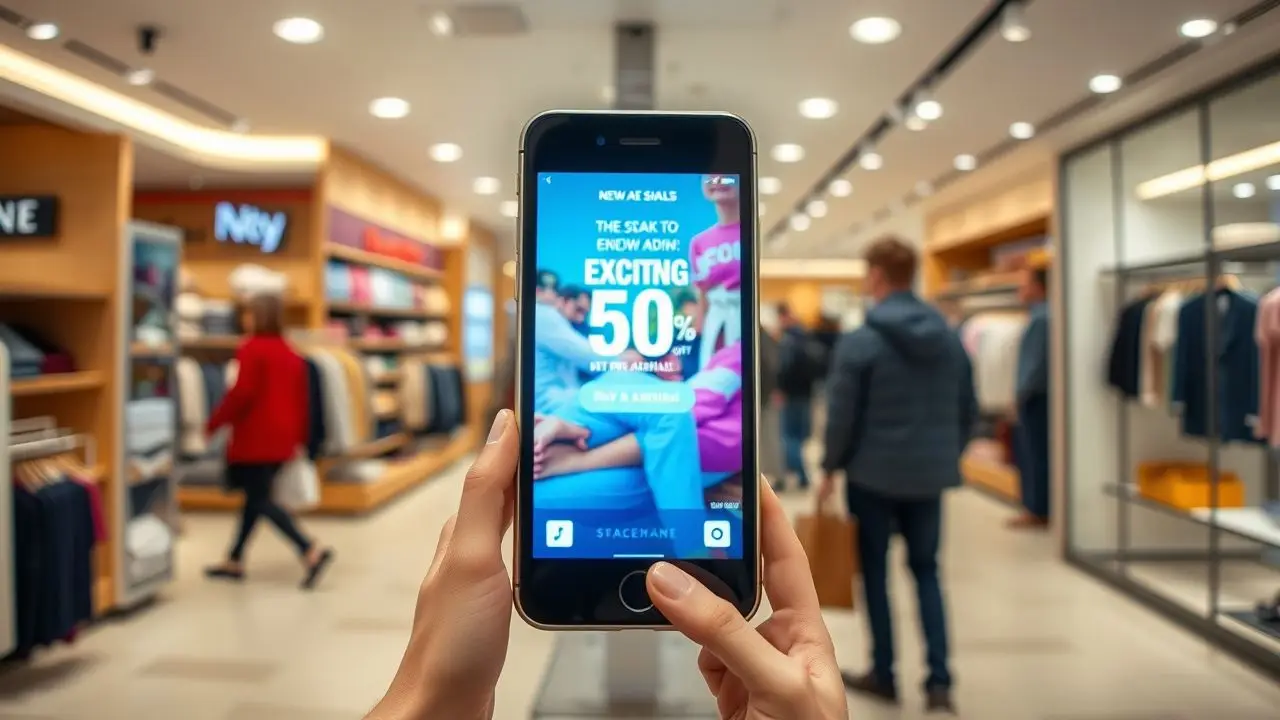
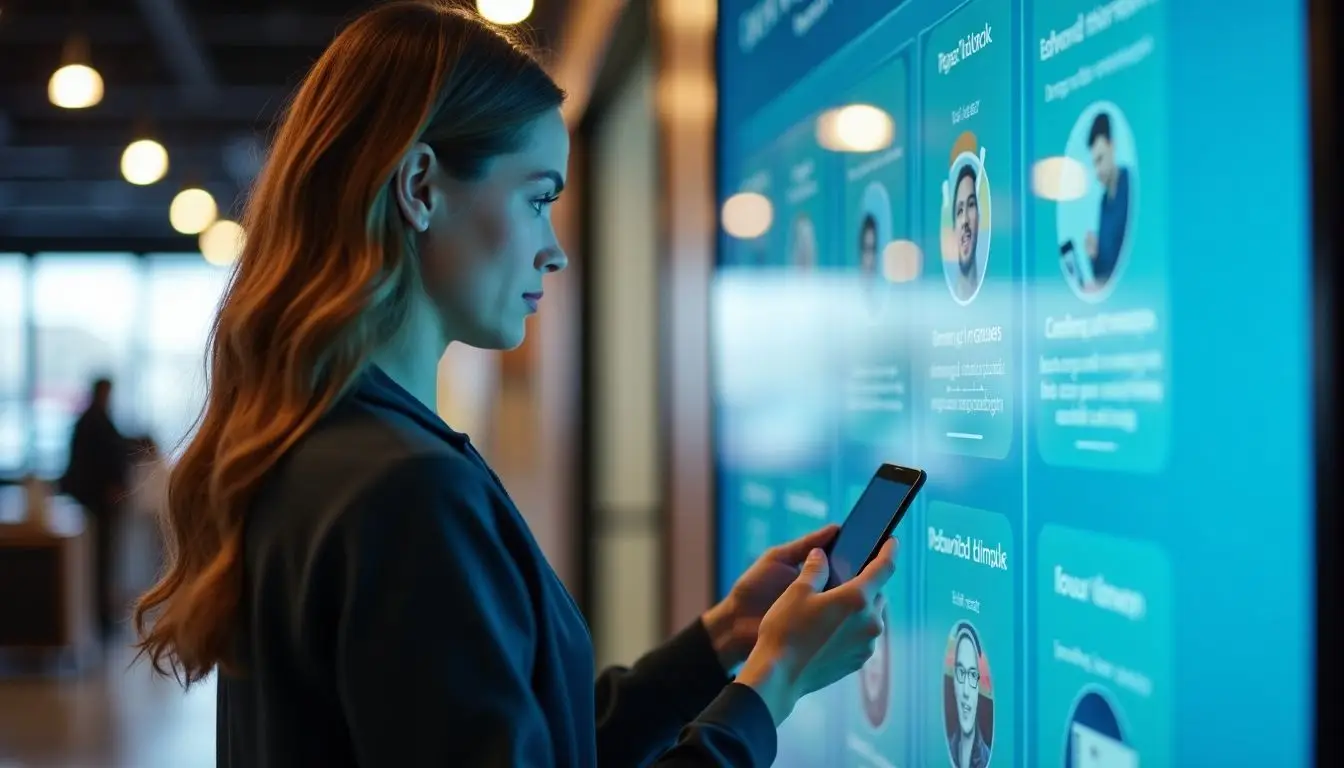

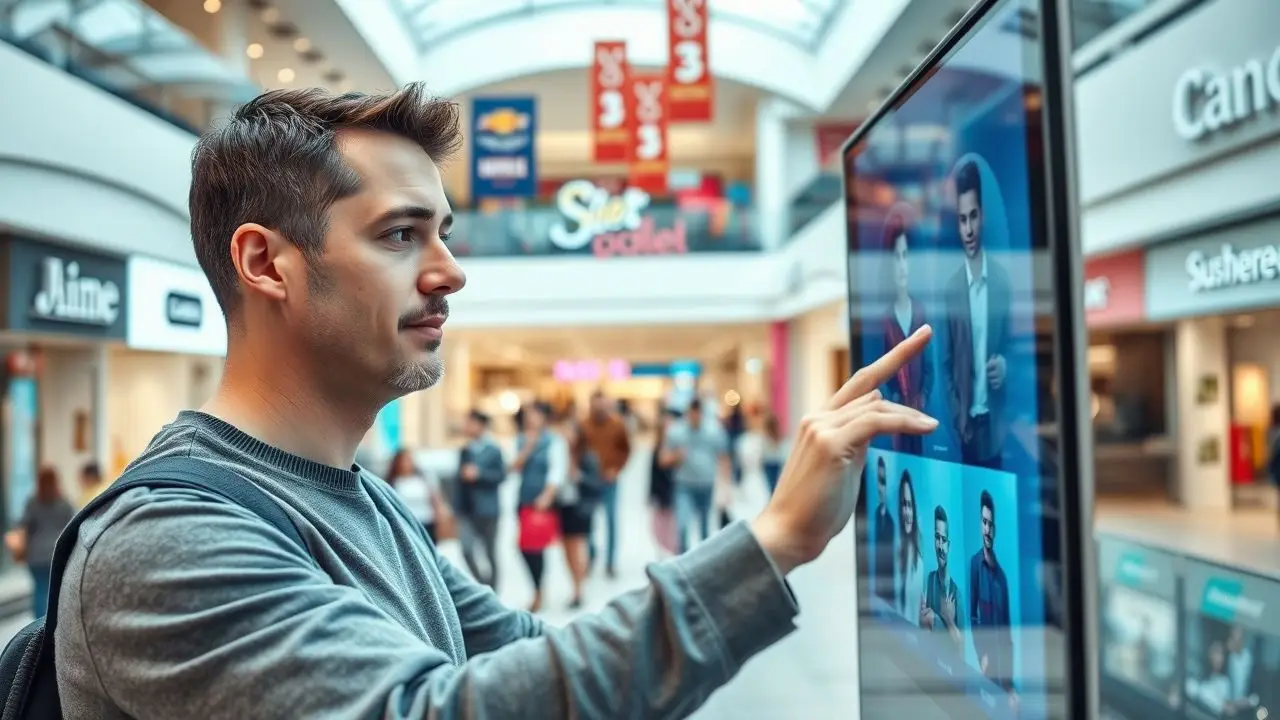
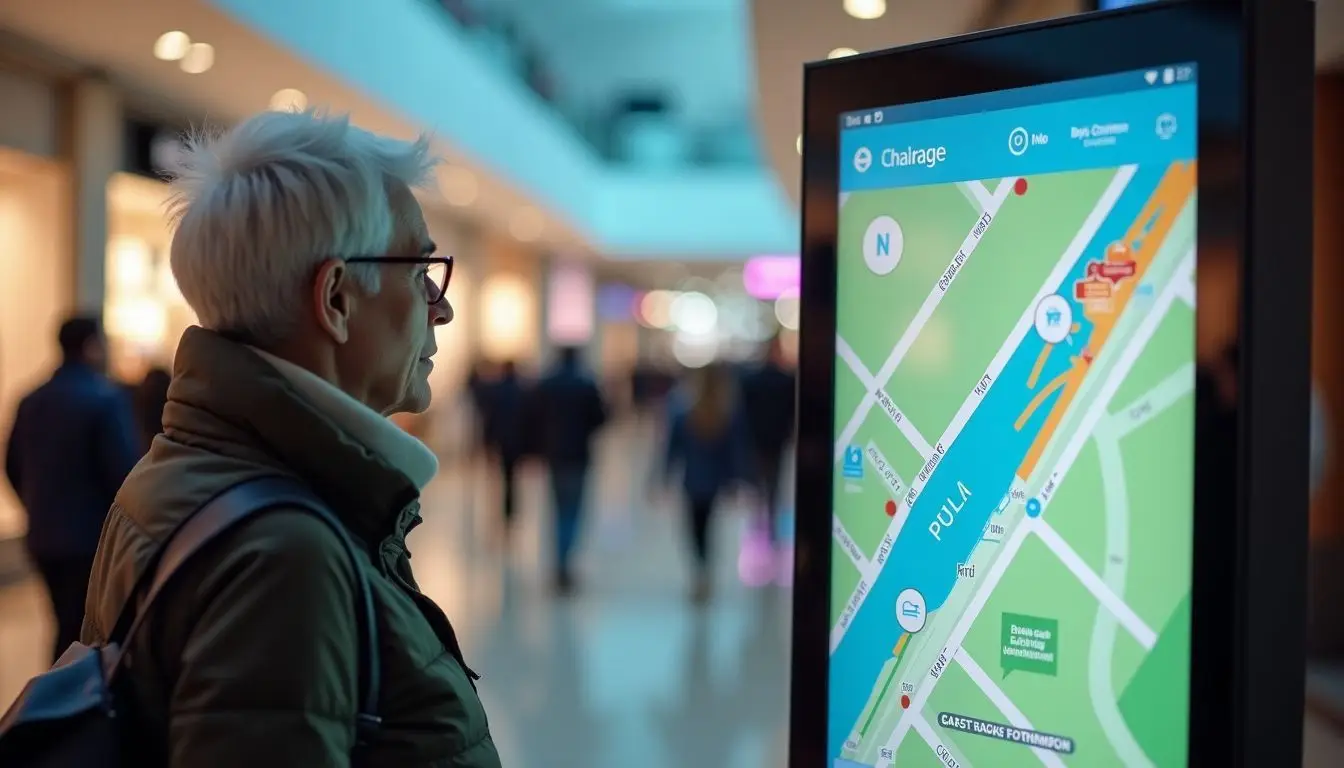
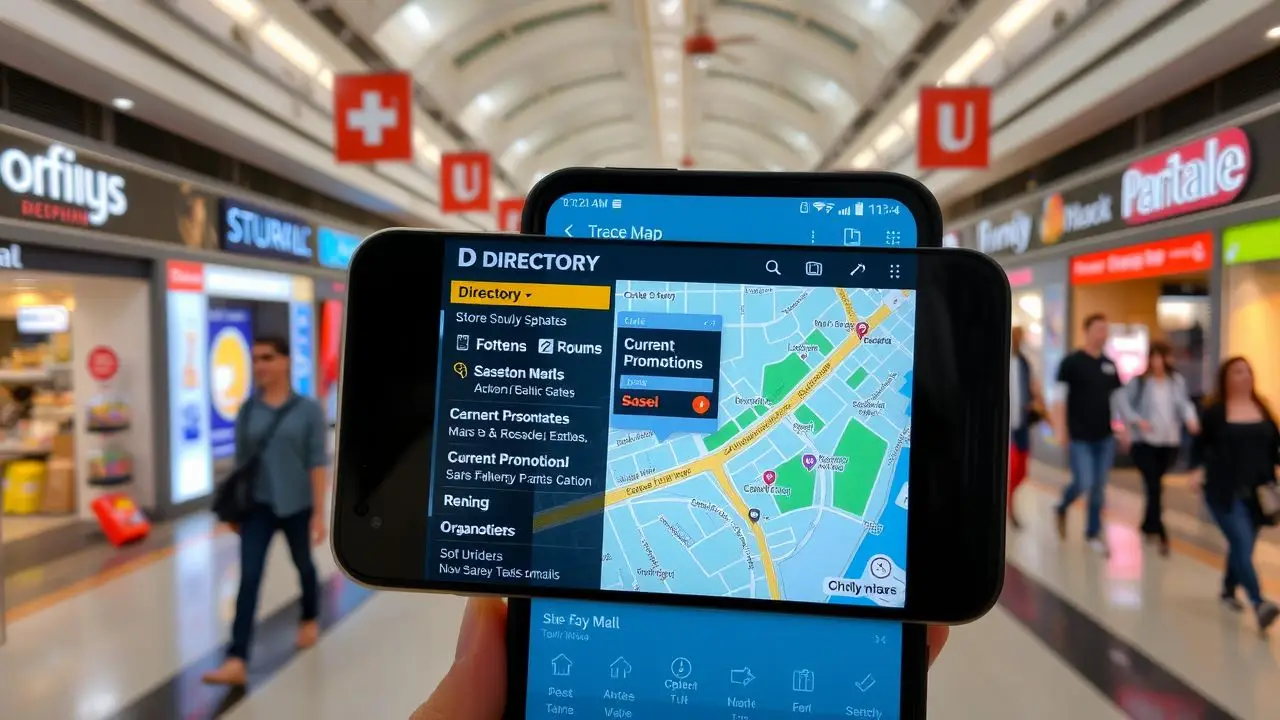
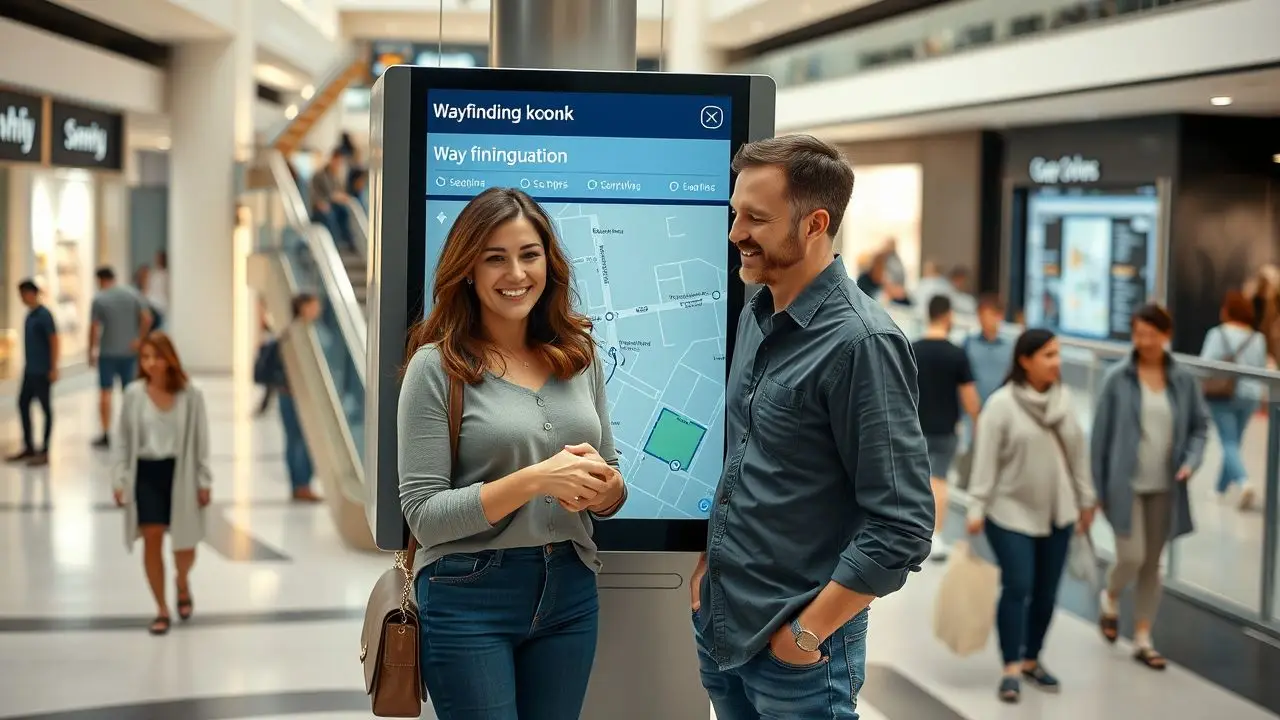
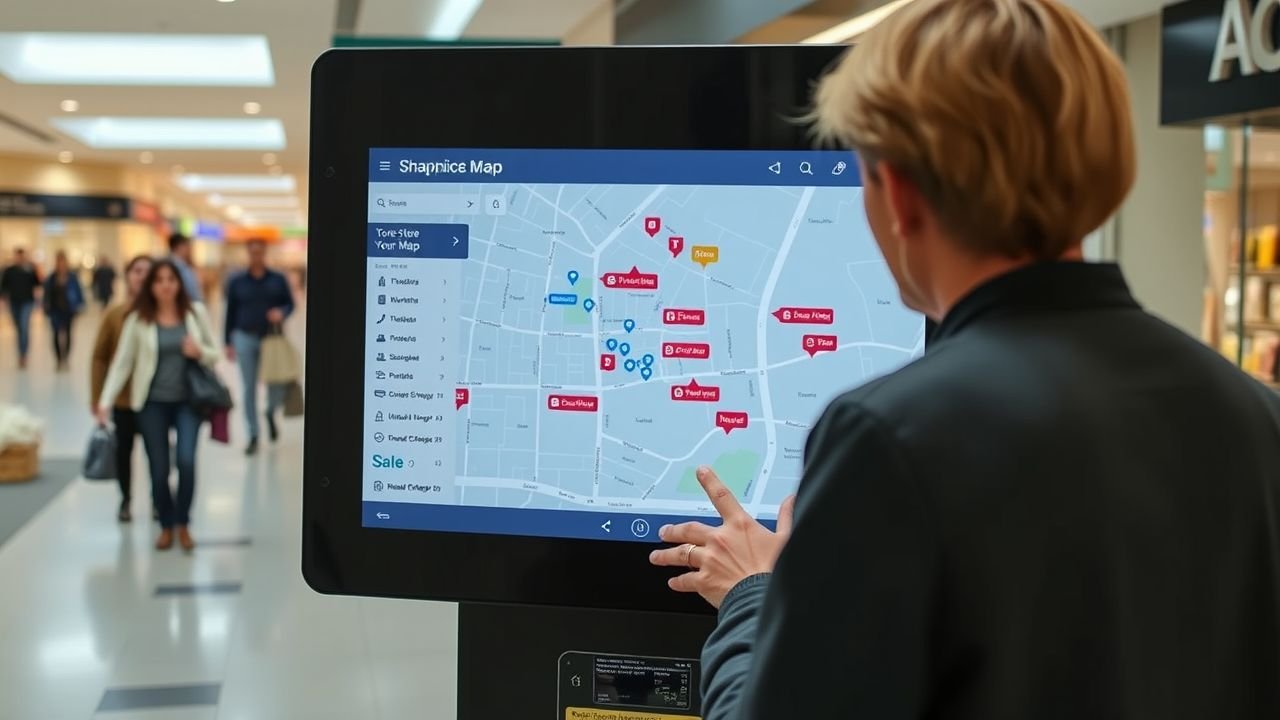
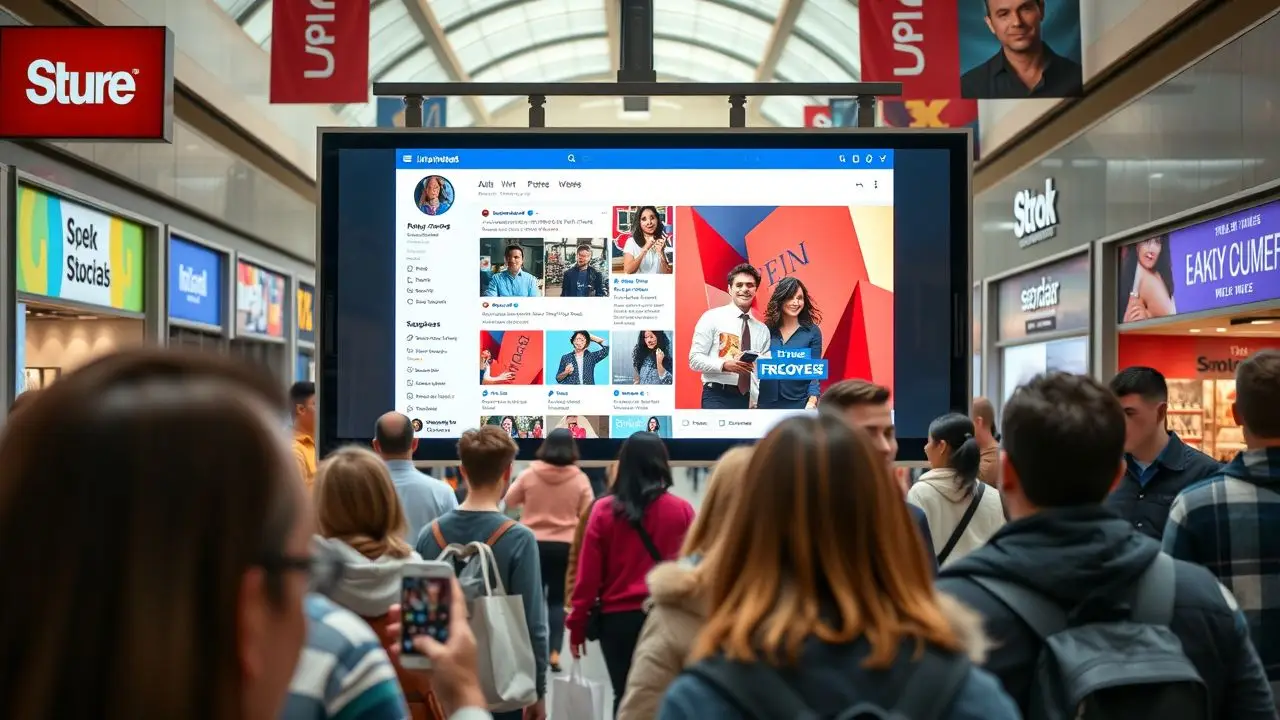


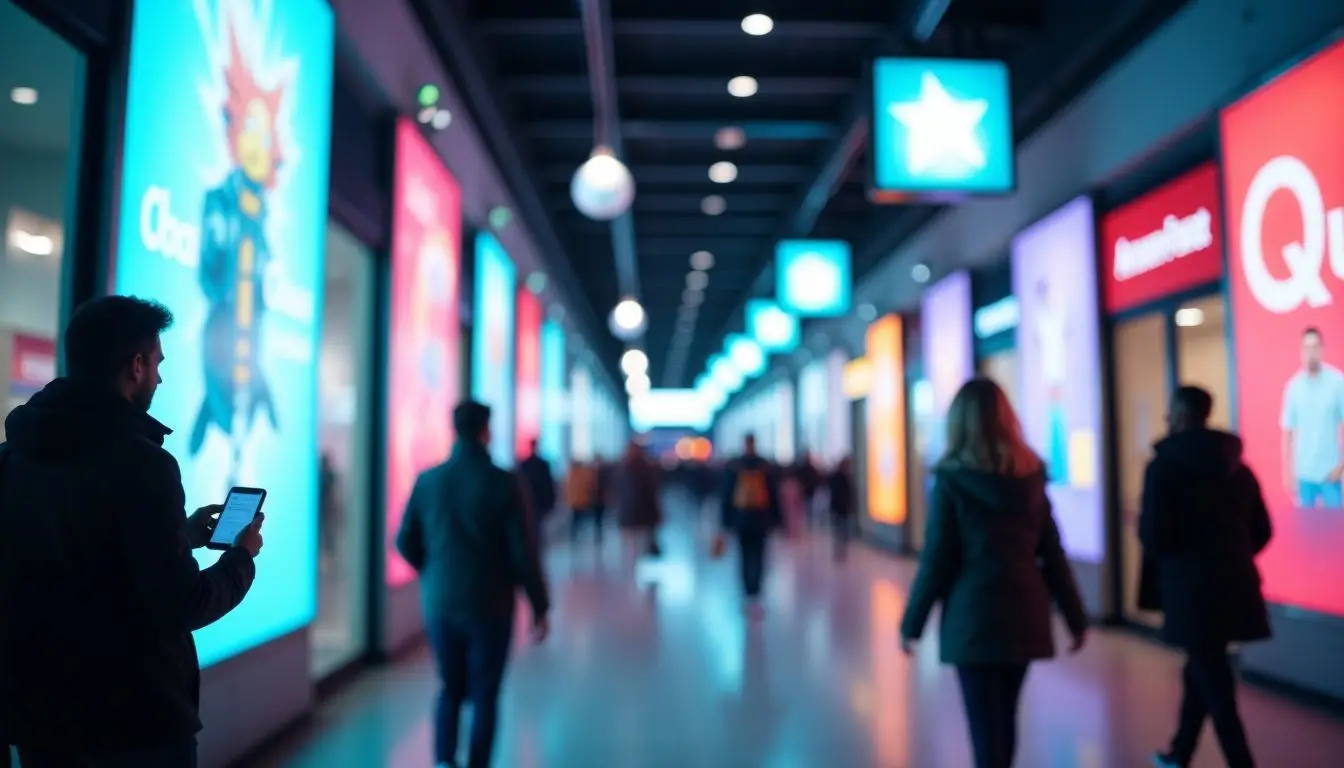

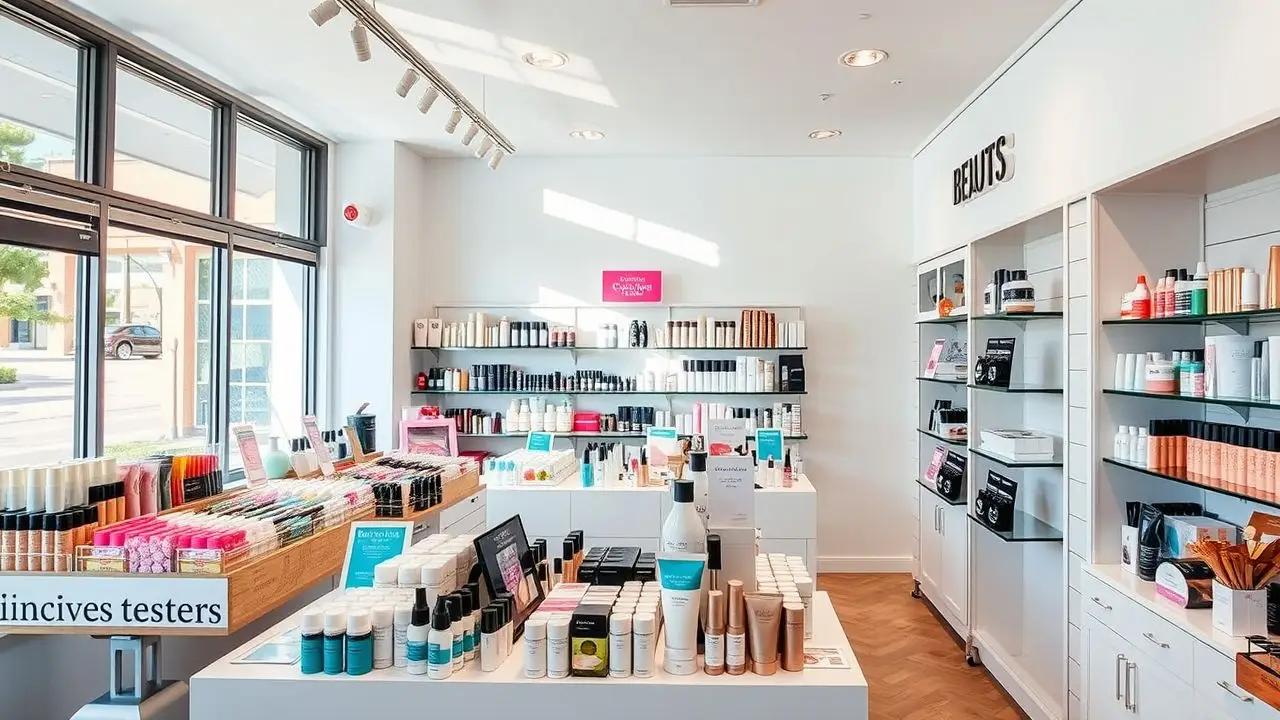
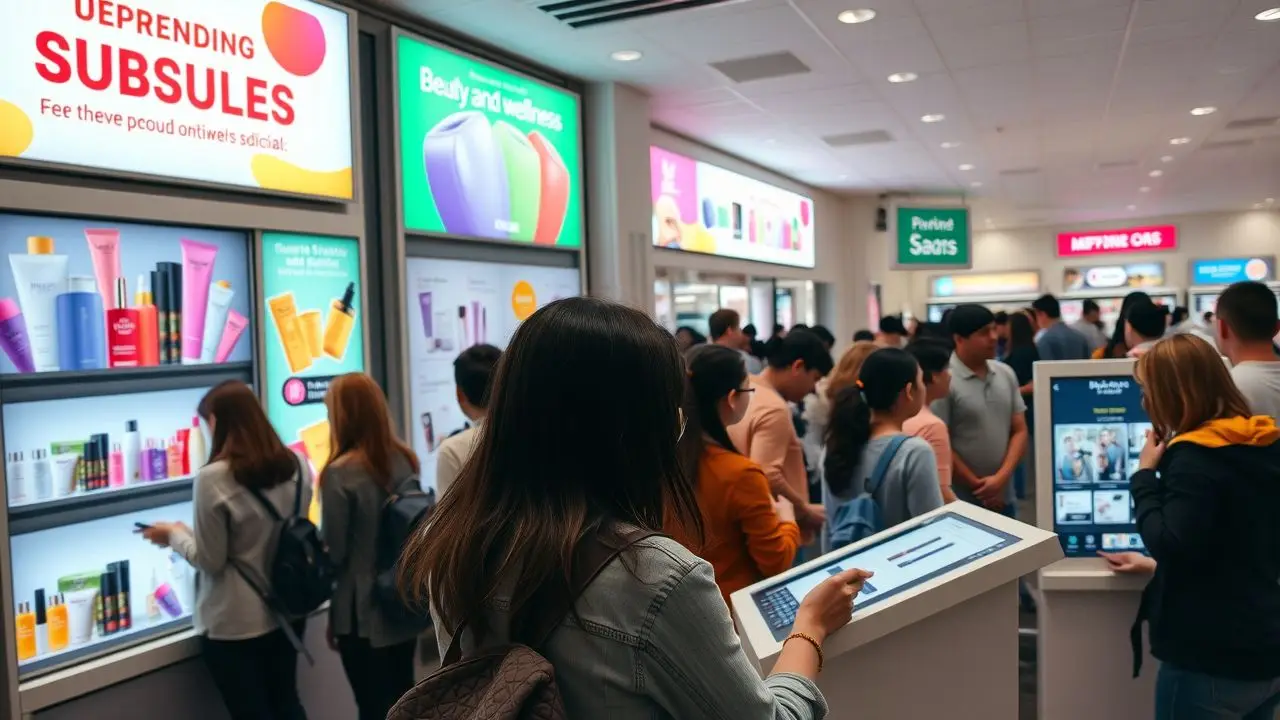
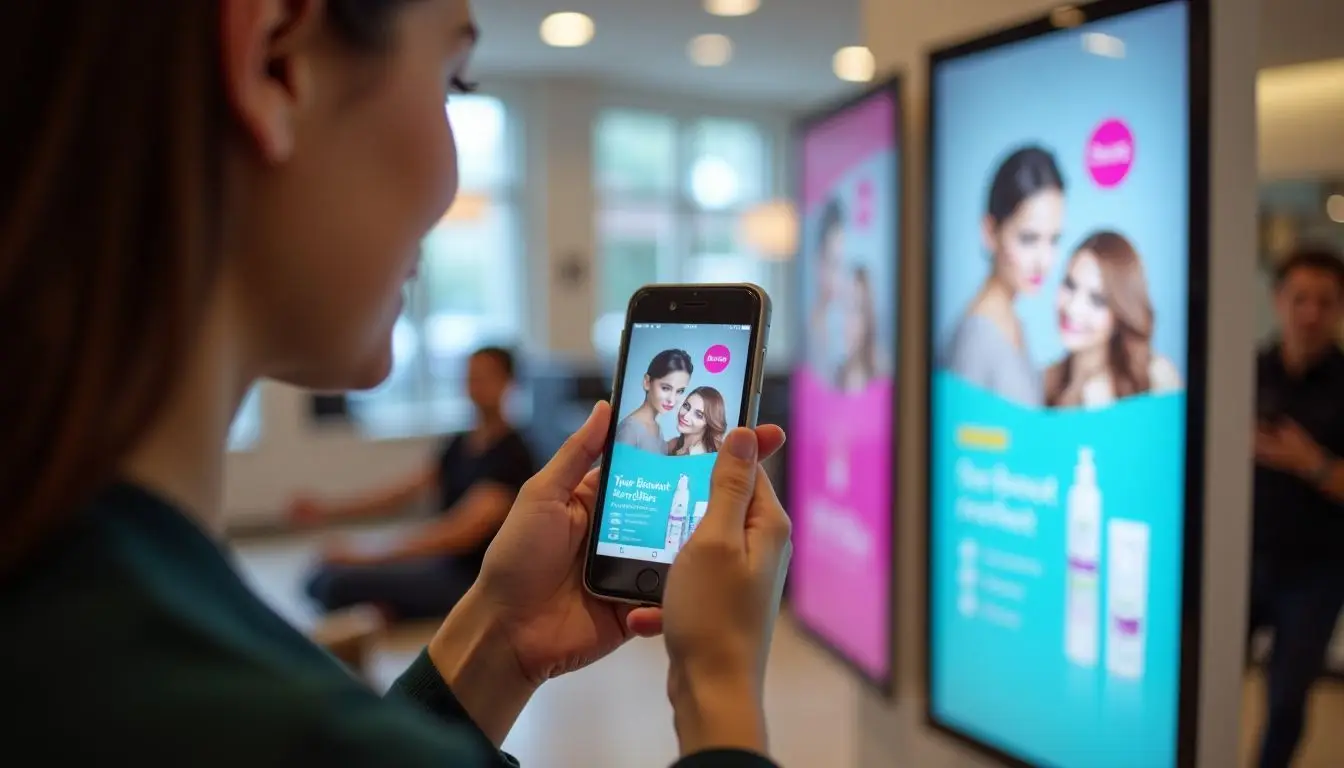 Personalized marketing is key in the beauty and wellness industry. It helps businesses connect better with customers. For instance, digital signage can show tailored product suggestions based on a customer’s past purchases.
Personalized marketing is key in the beauty and wellness industry. It helps businesses connect better with customers. For instance, digital signage can show tailored product suggestions based on a customer’s past purchases.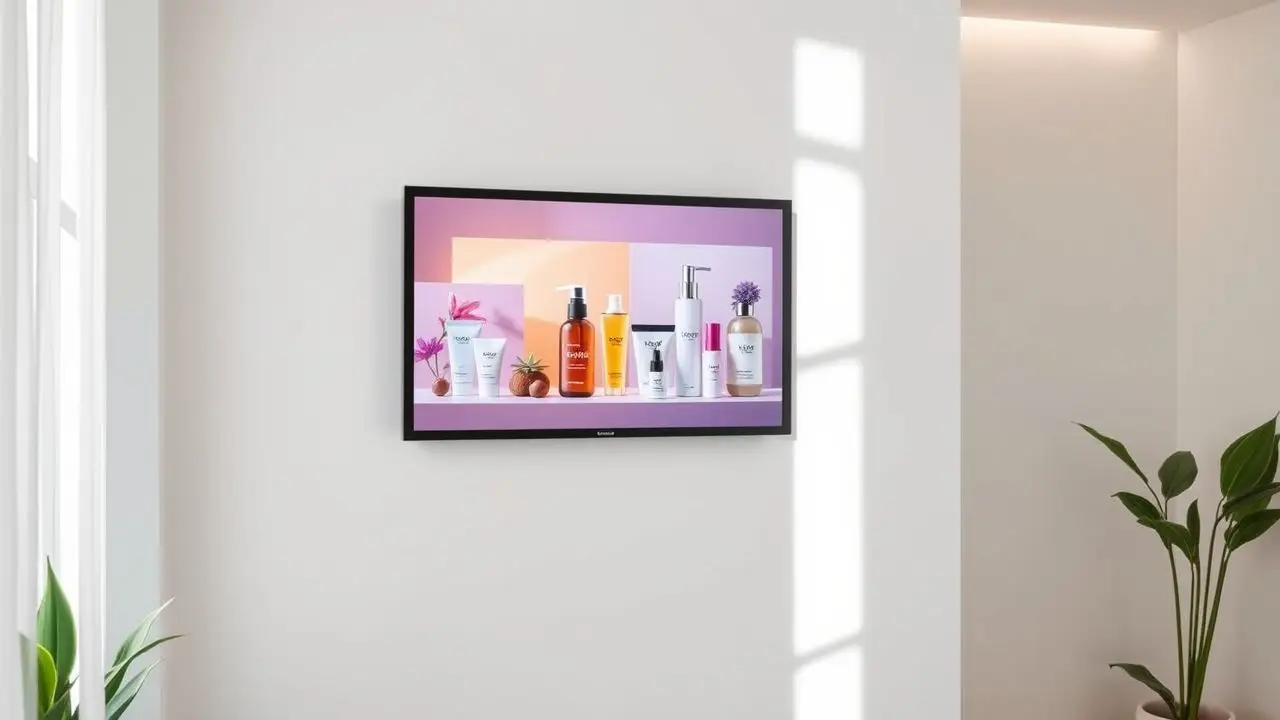

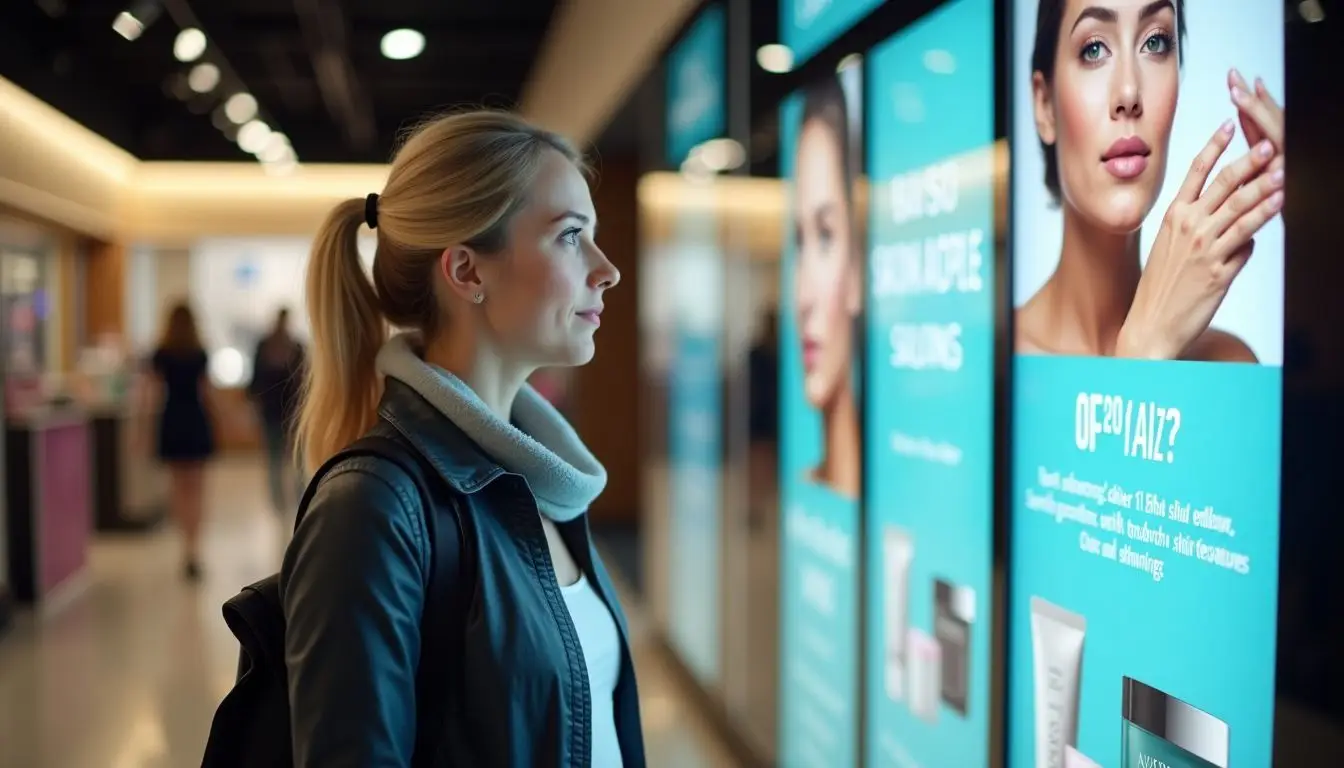
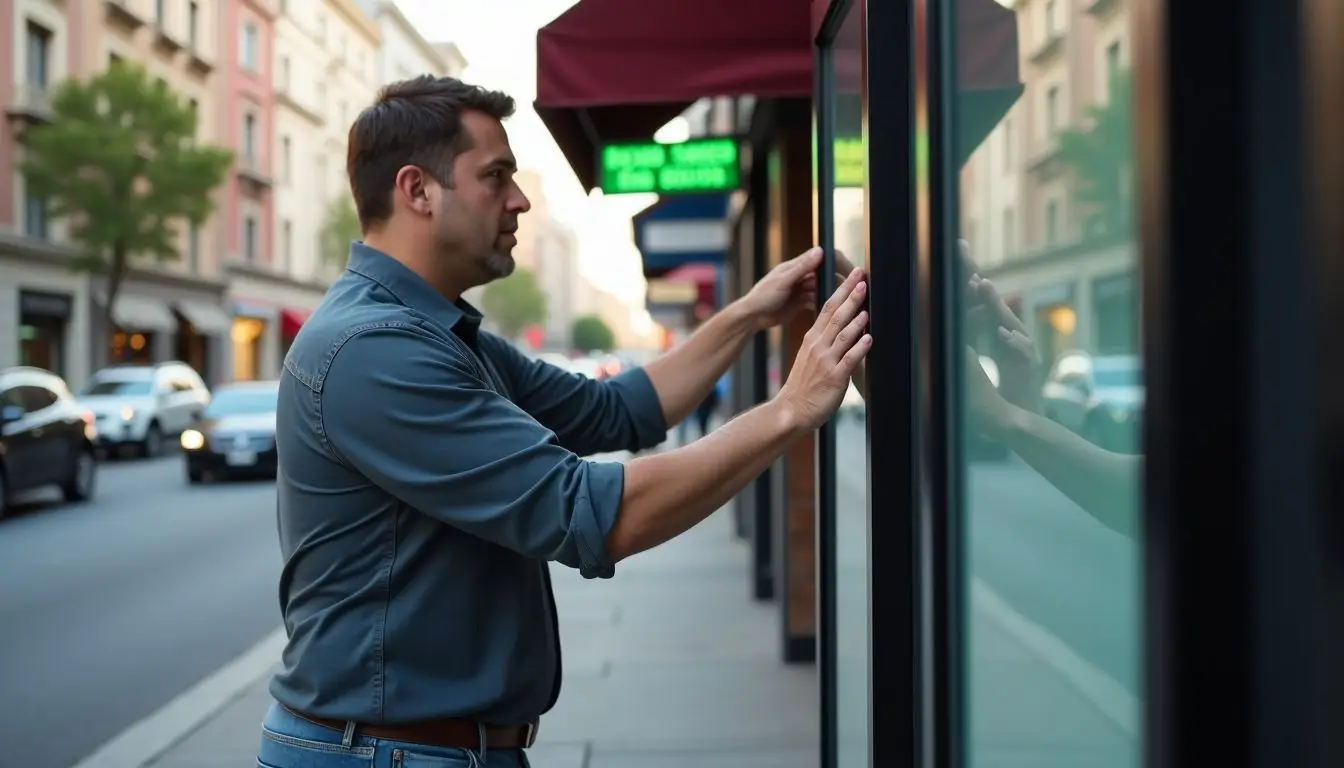
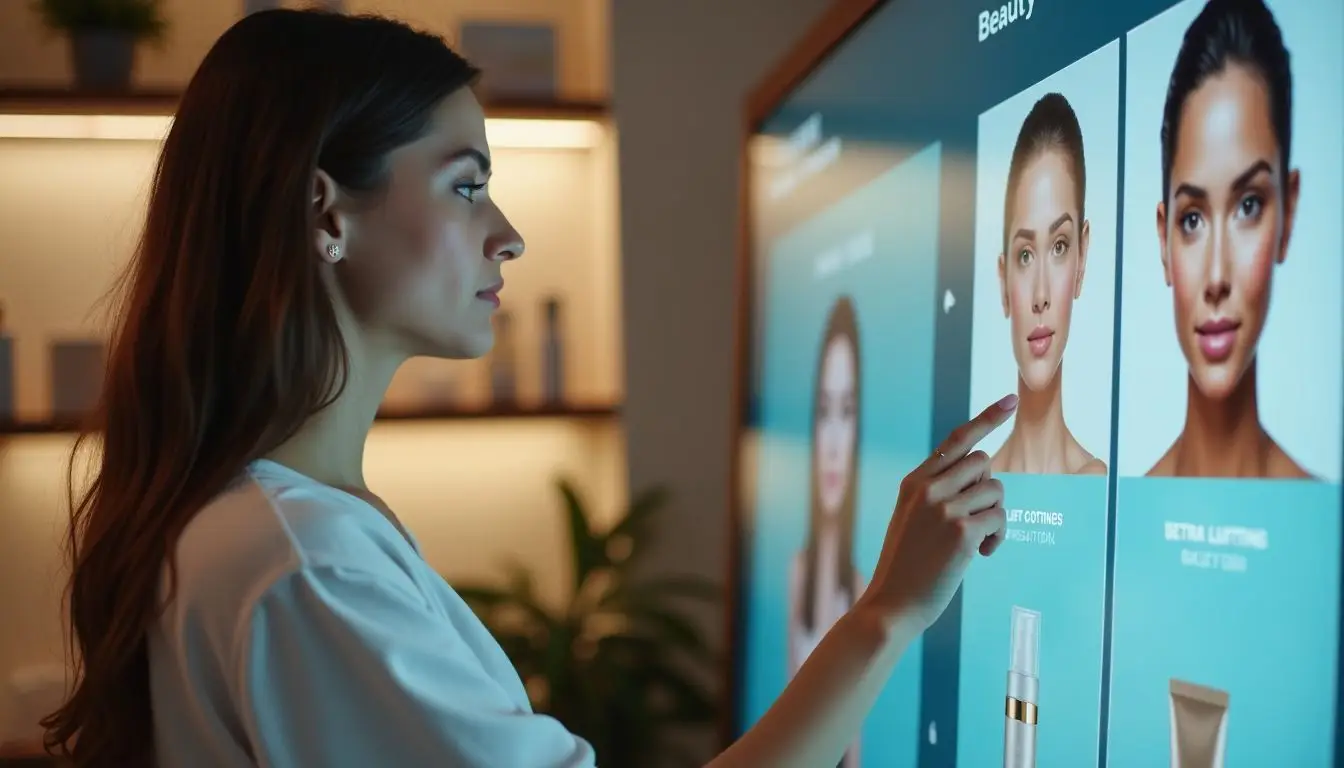
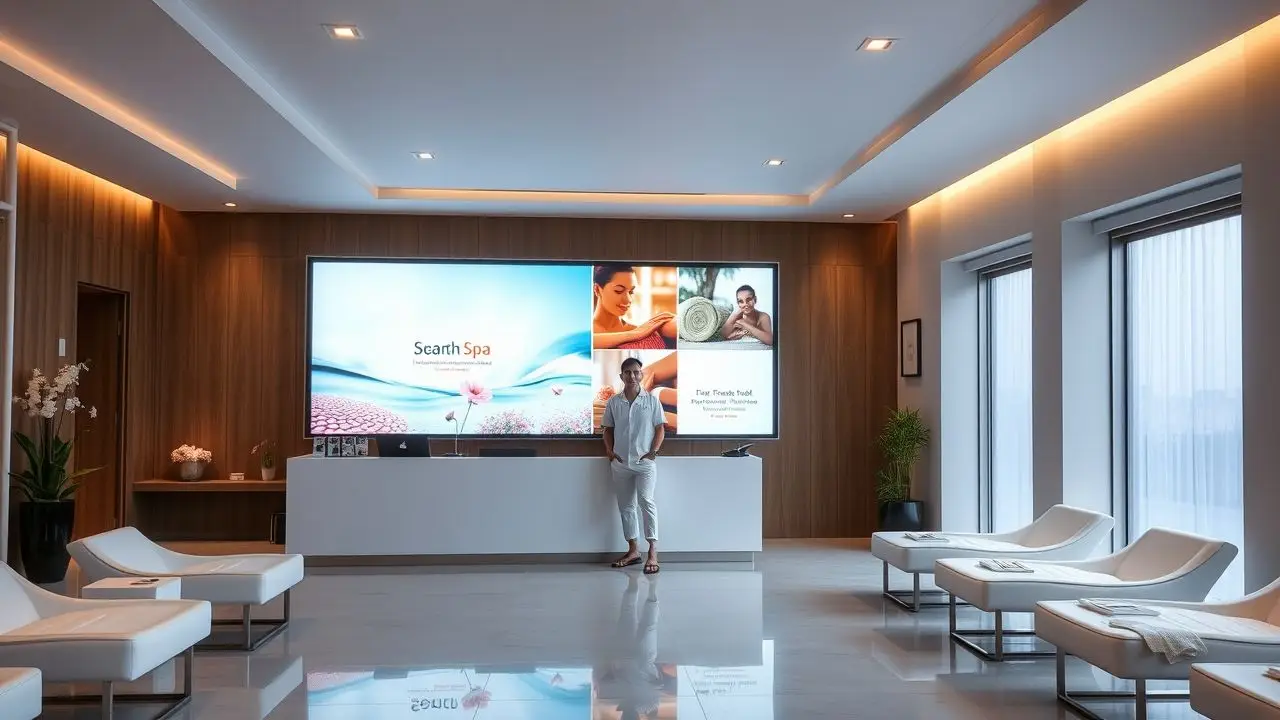
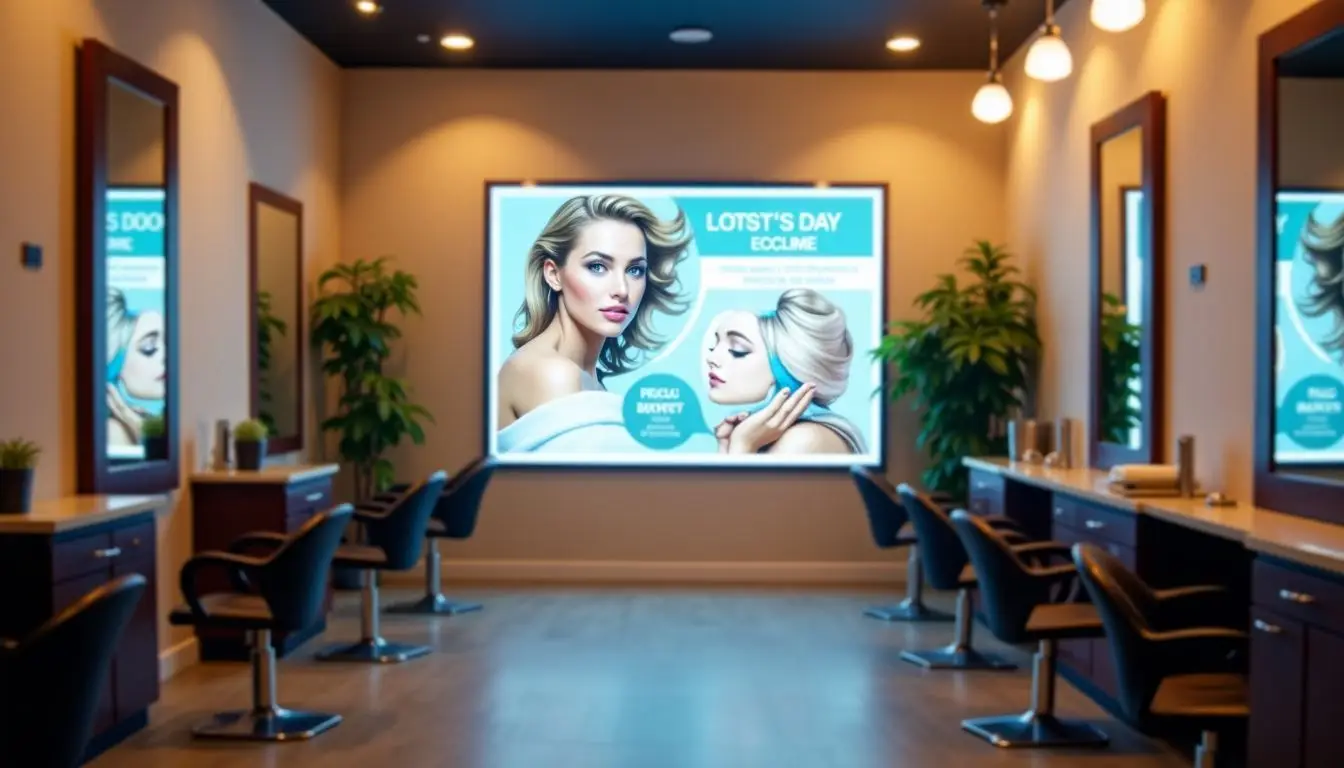

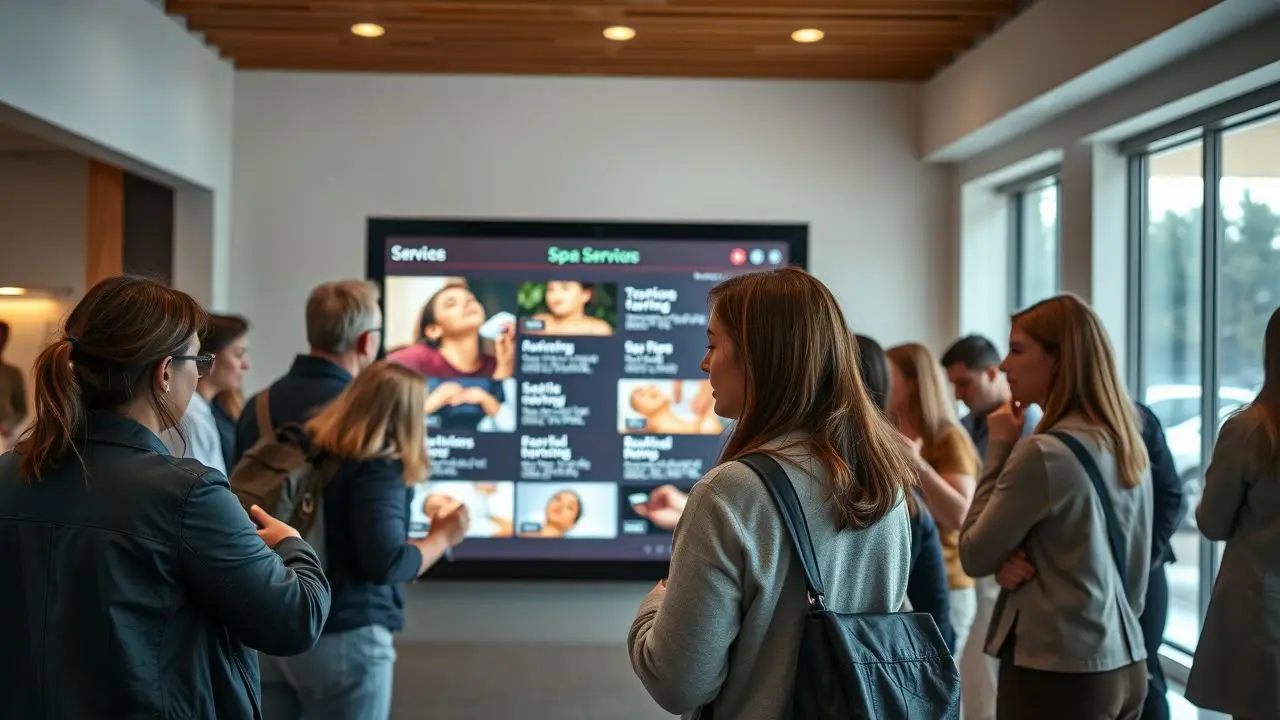

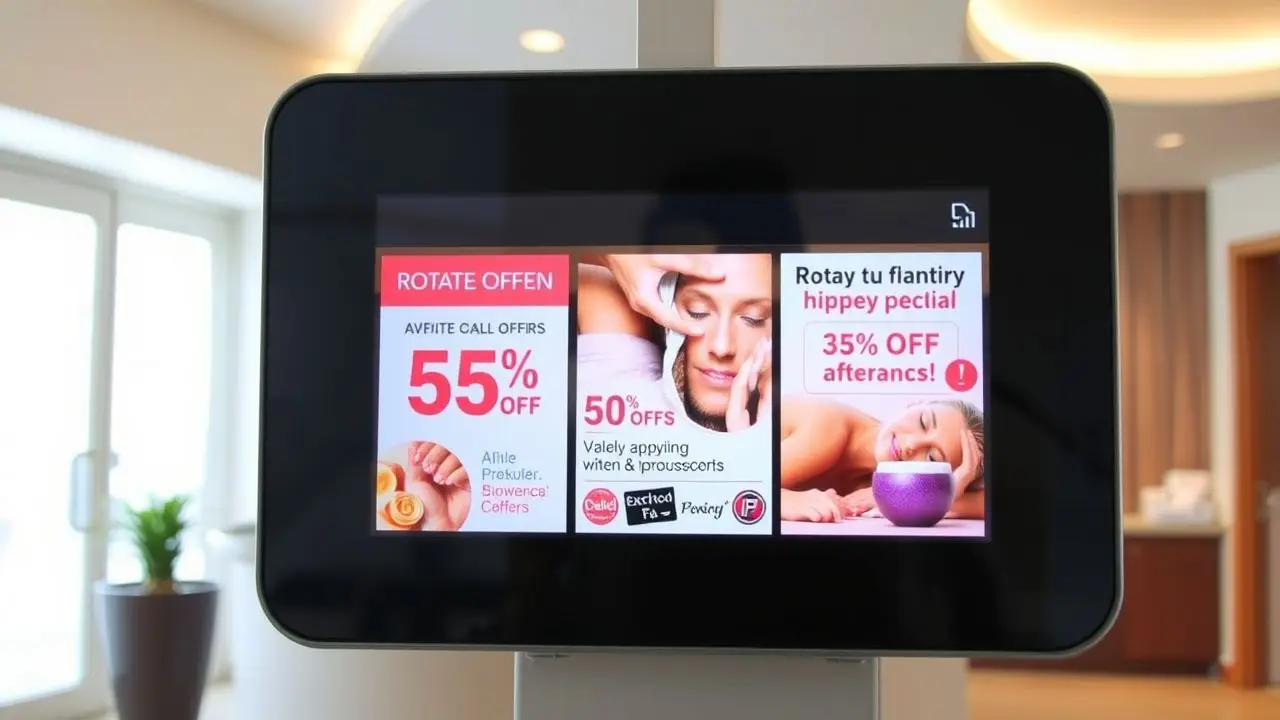


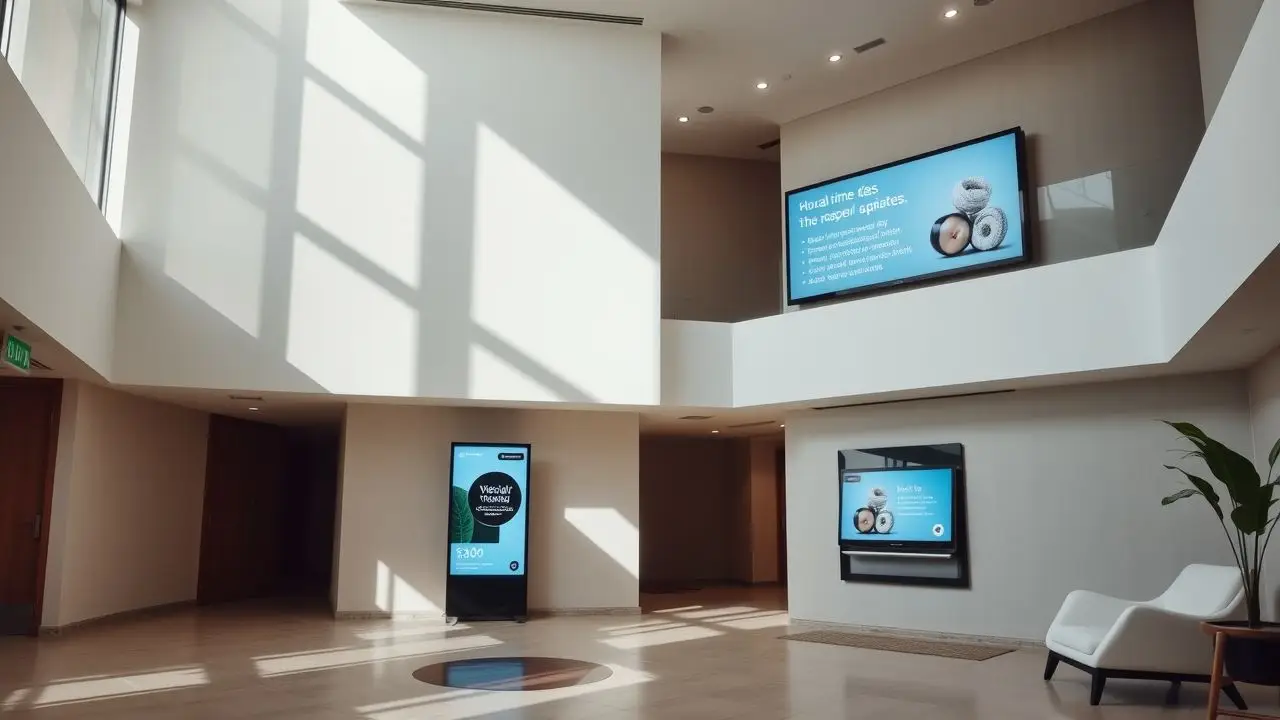
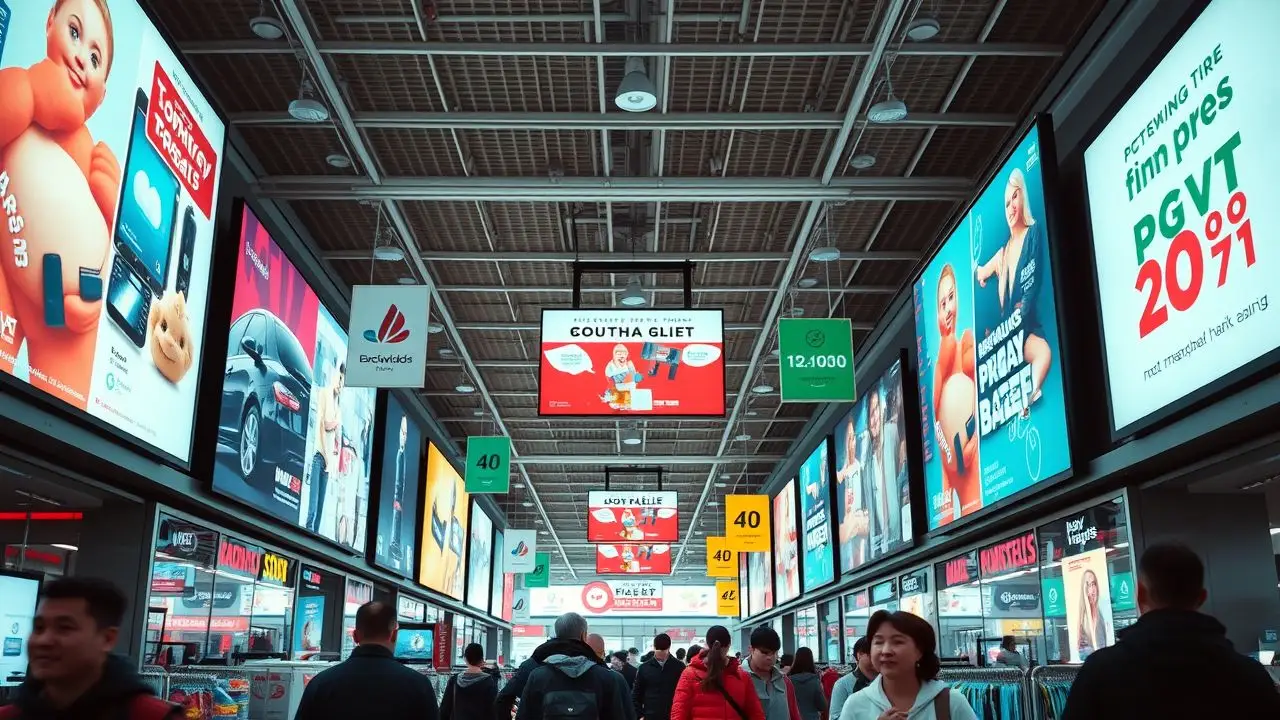
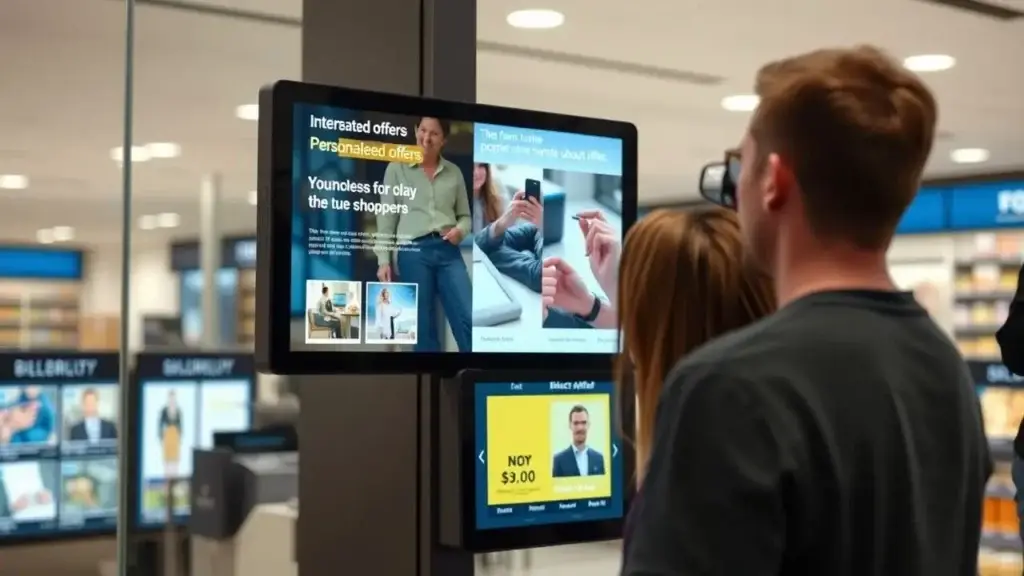
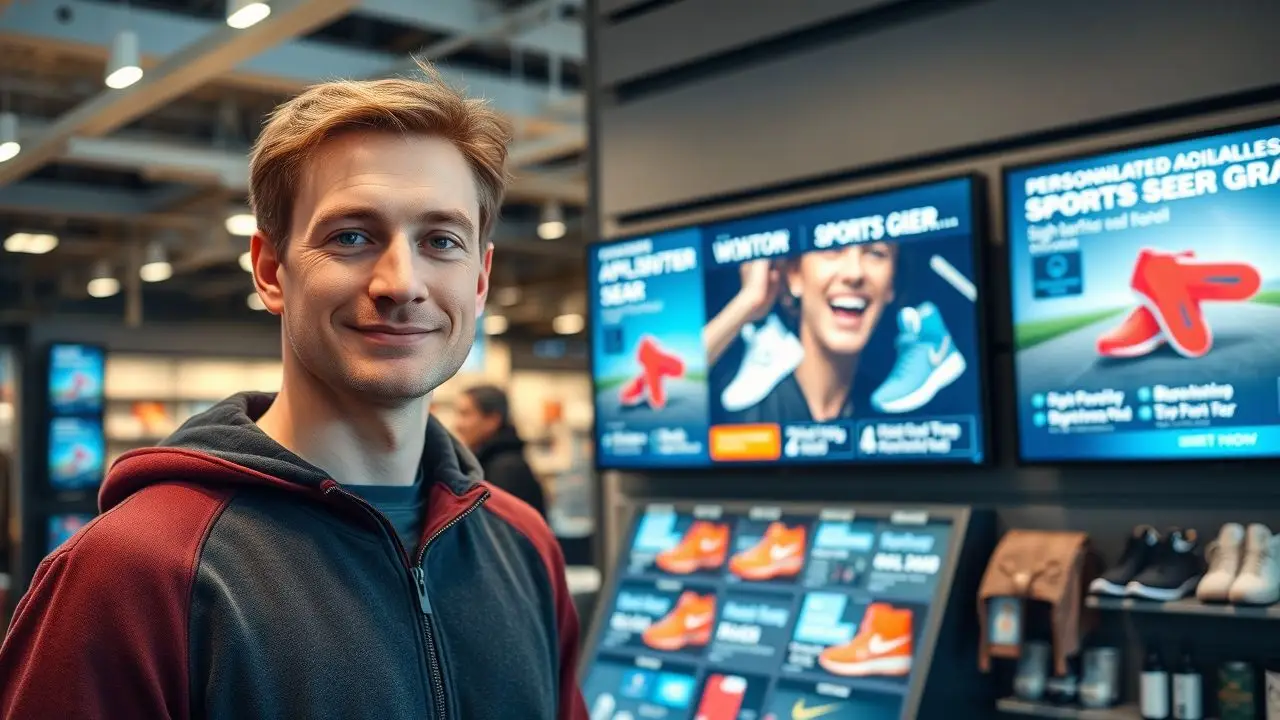 Personalized experiences make shopping more enjoyable. Digital signage can show ads based on customer preferences. For example, if a shopper often buys sports gear, the display can show the latest items in that category.
Personalized experiences make shopping more enjoyable. Digital signage can show ads based on customer preferences. For example, if a shopper often buys sports gear, the display can show the latest items in that category.